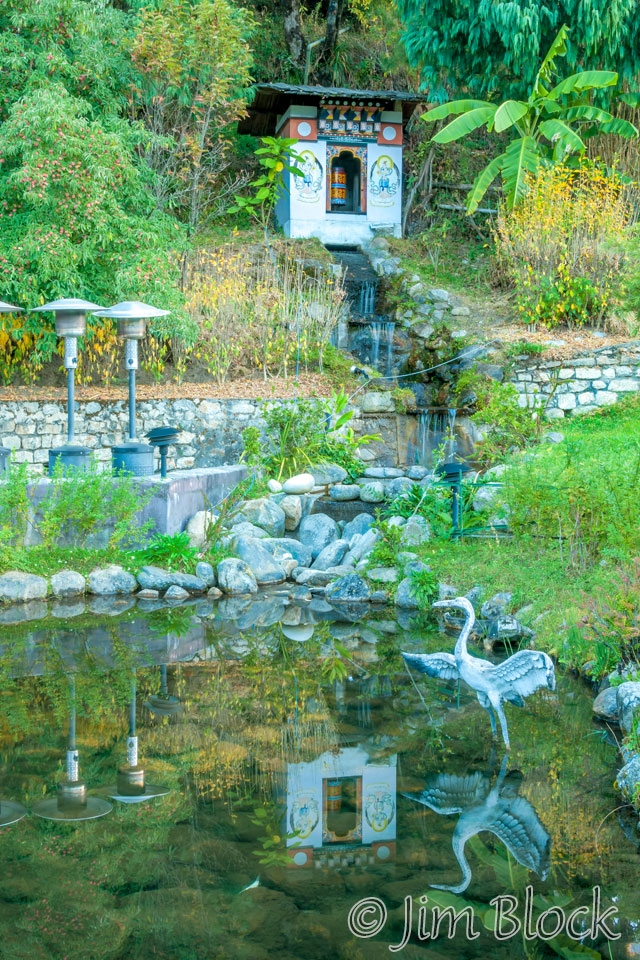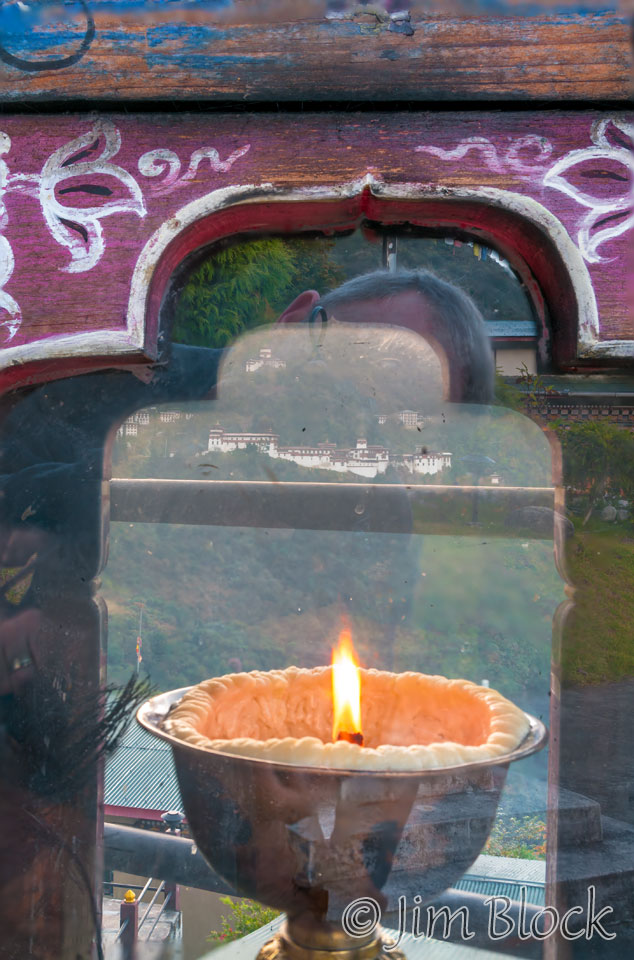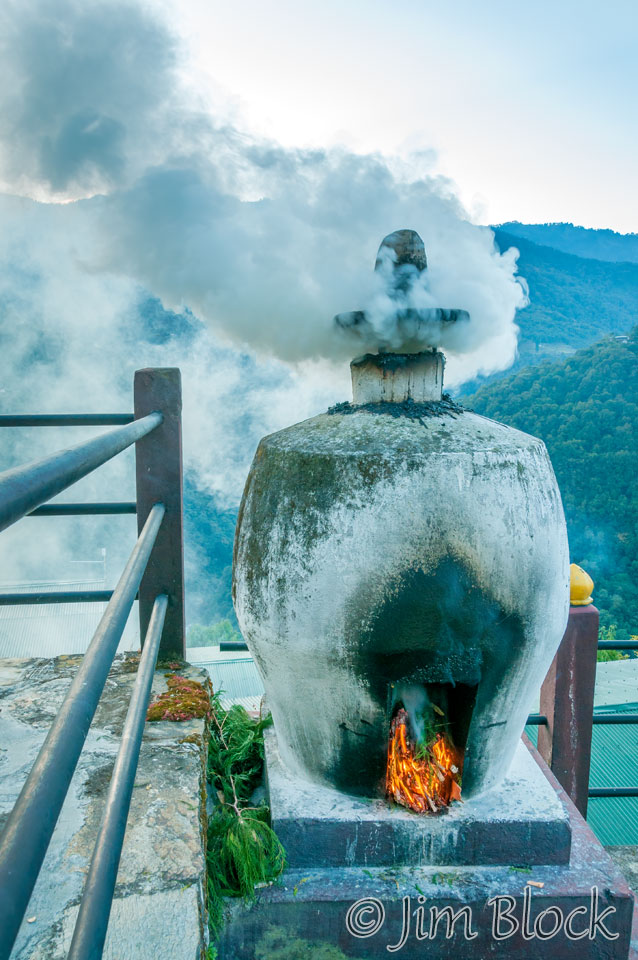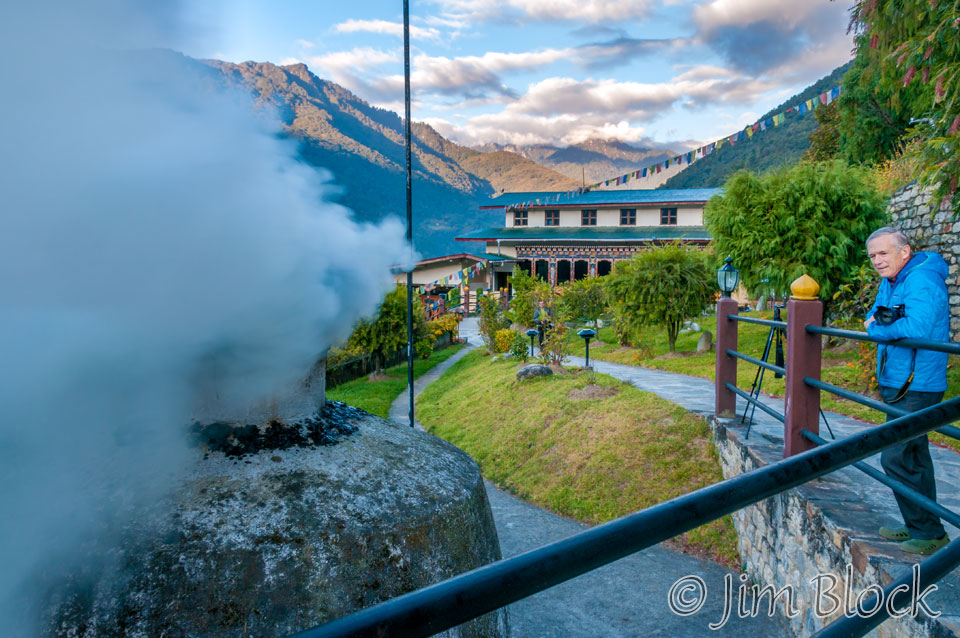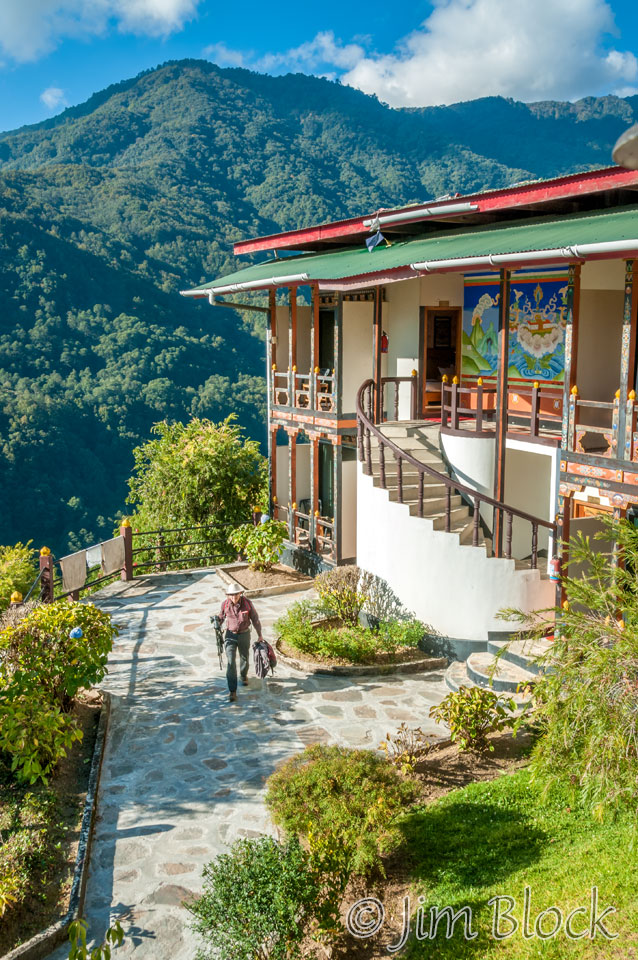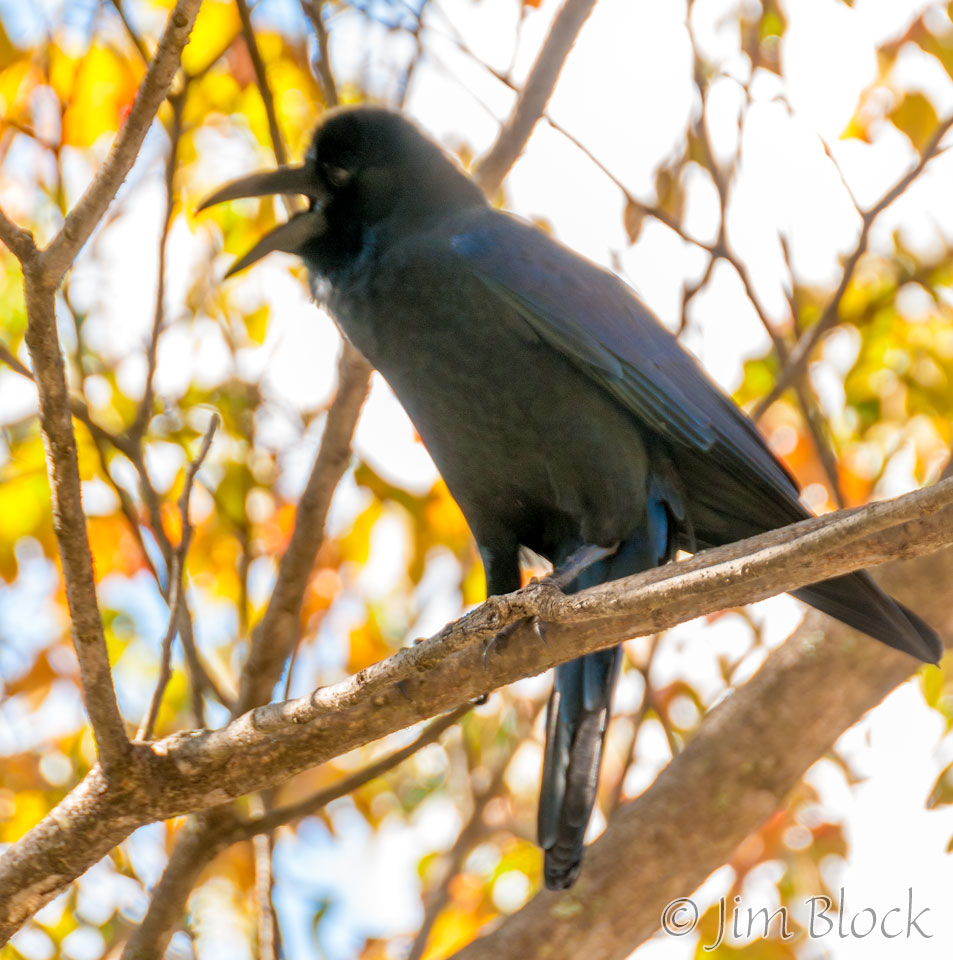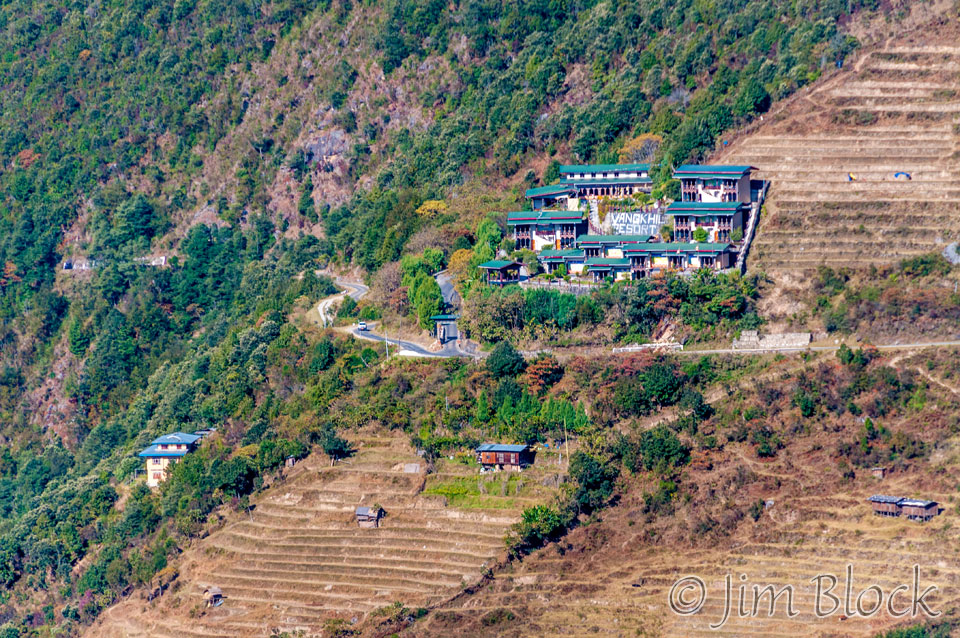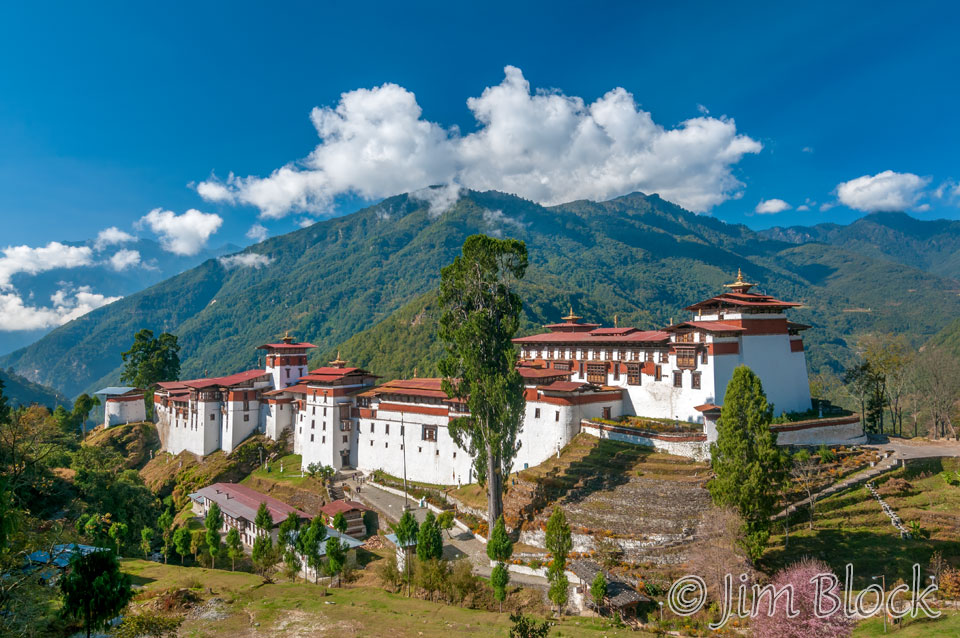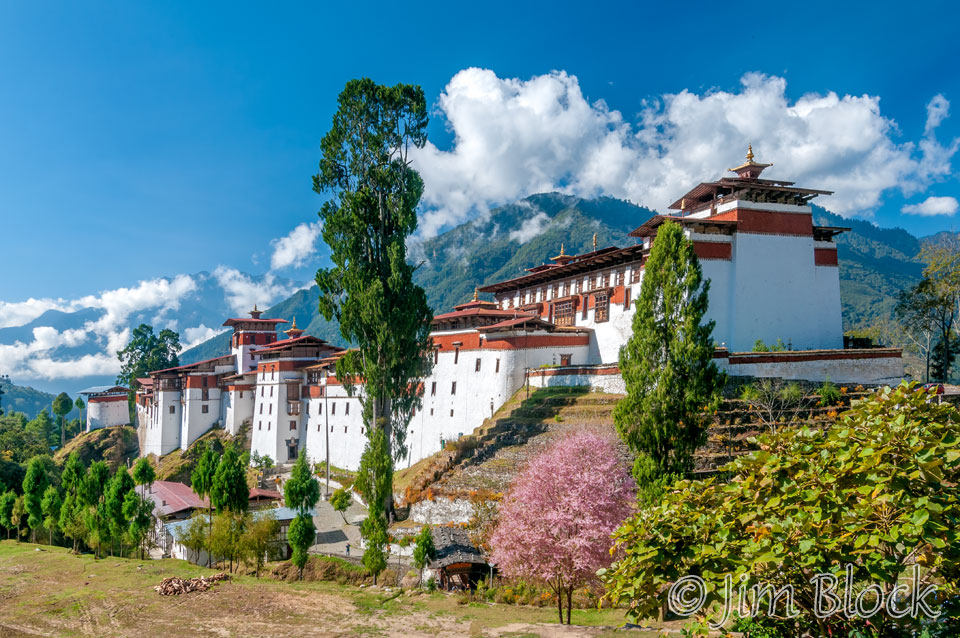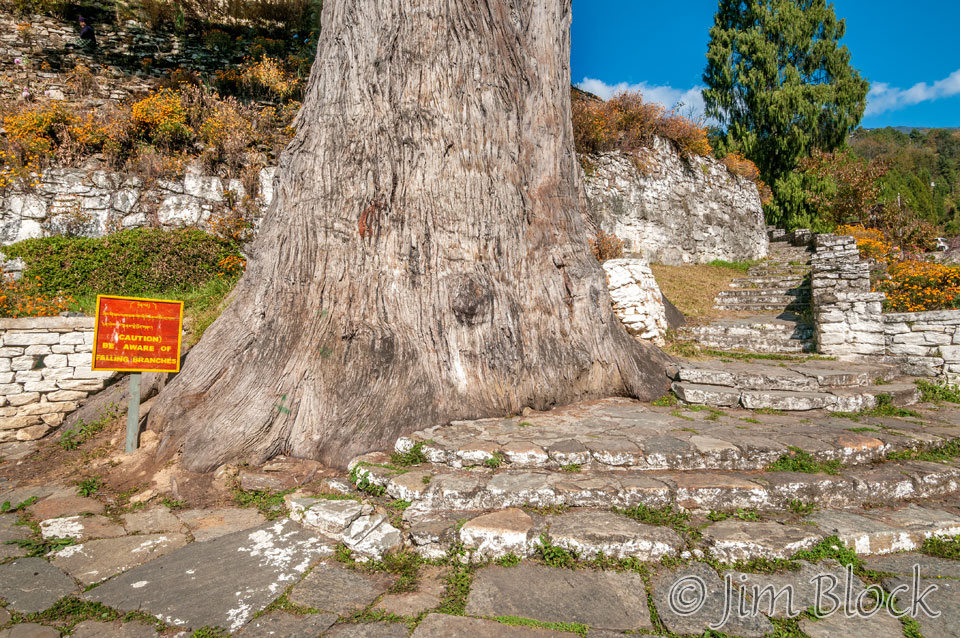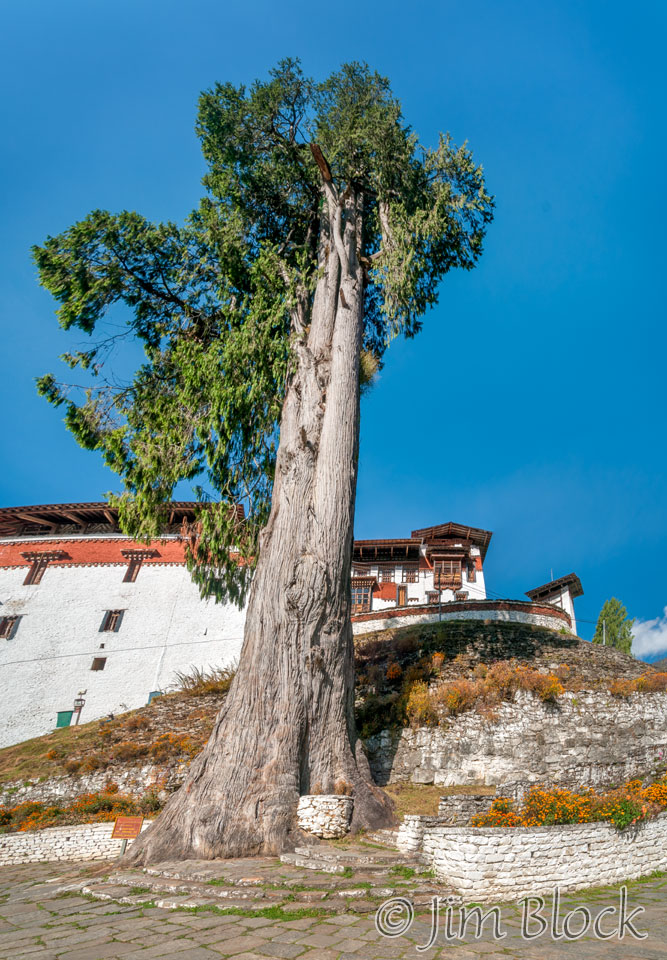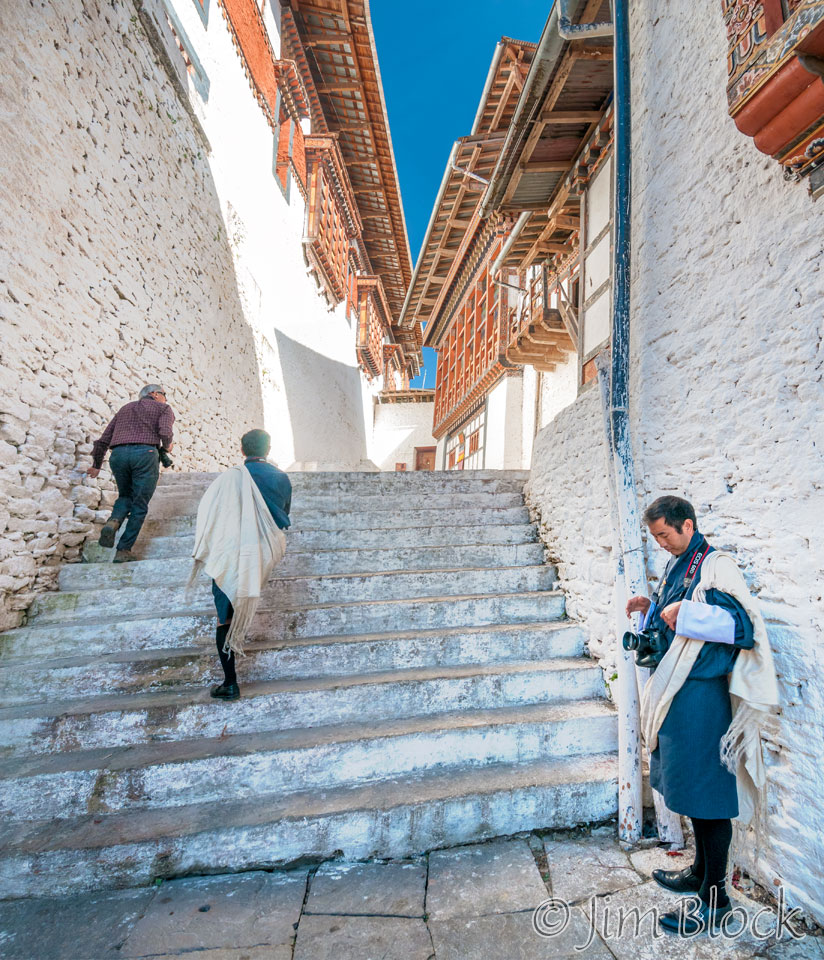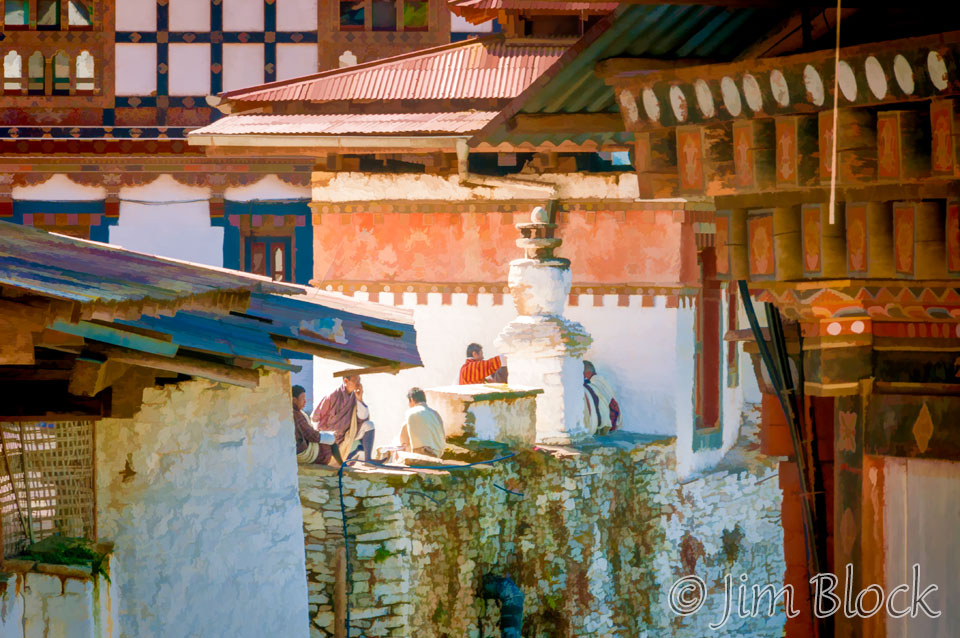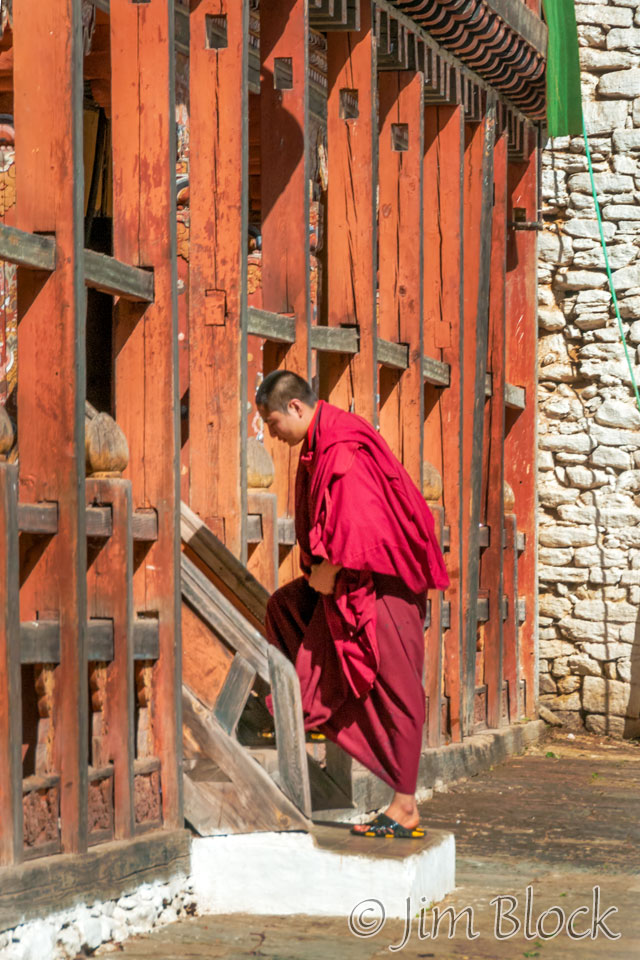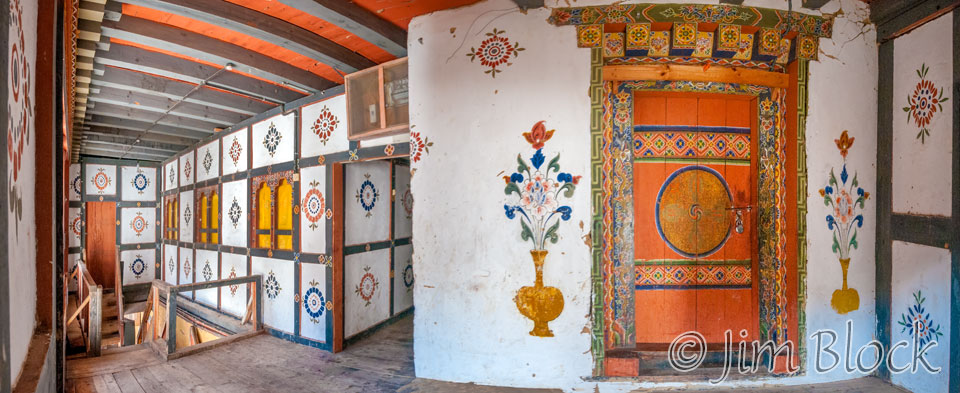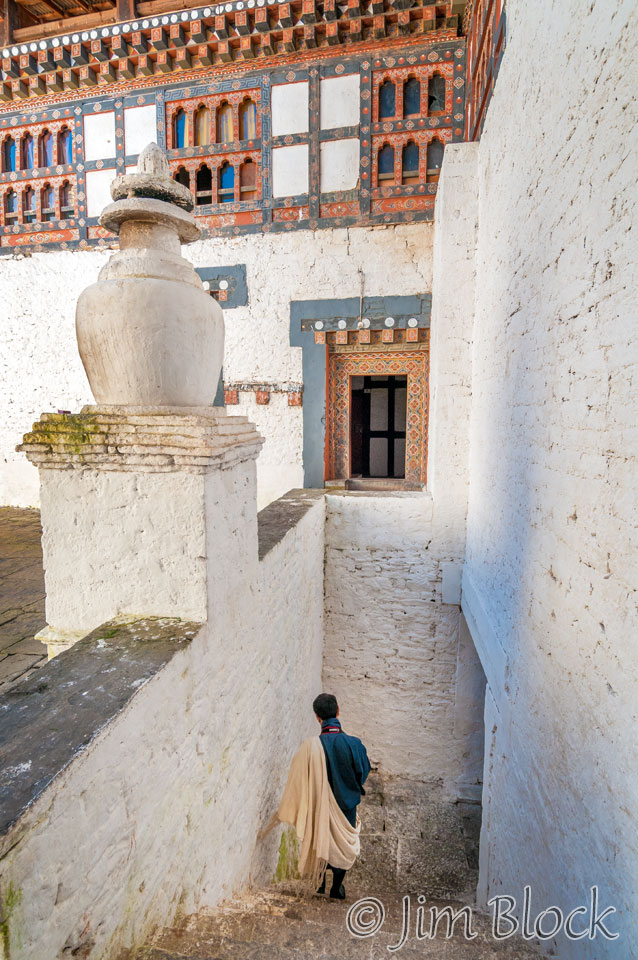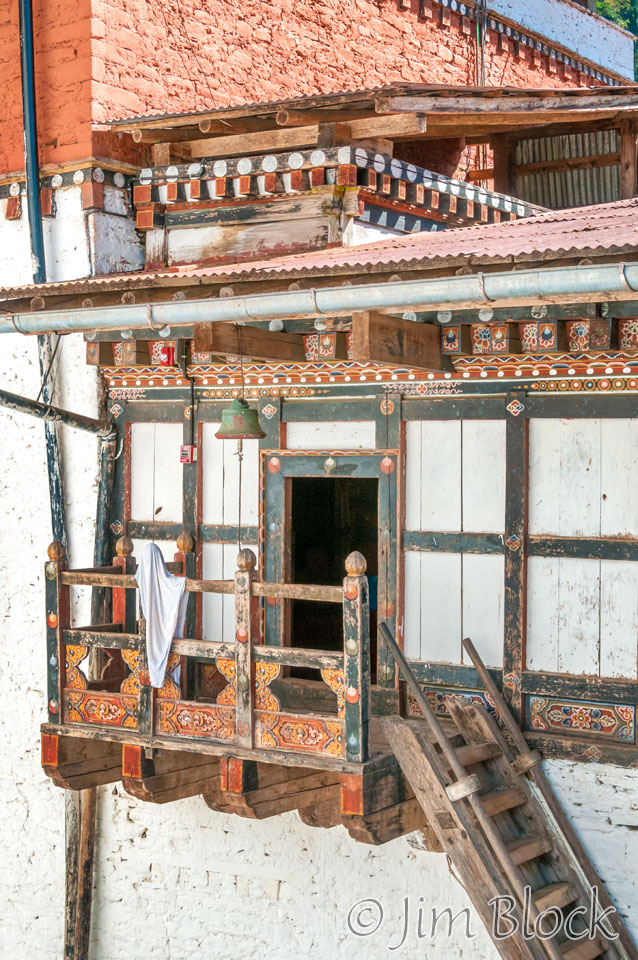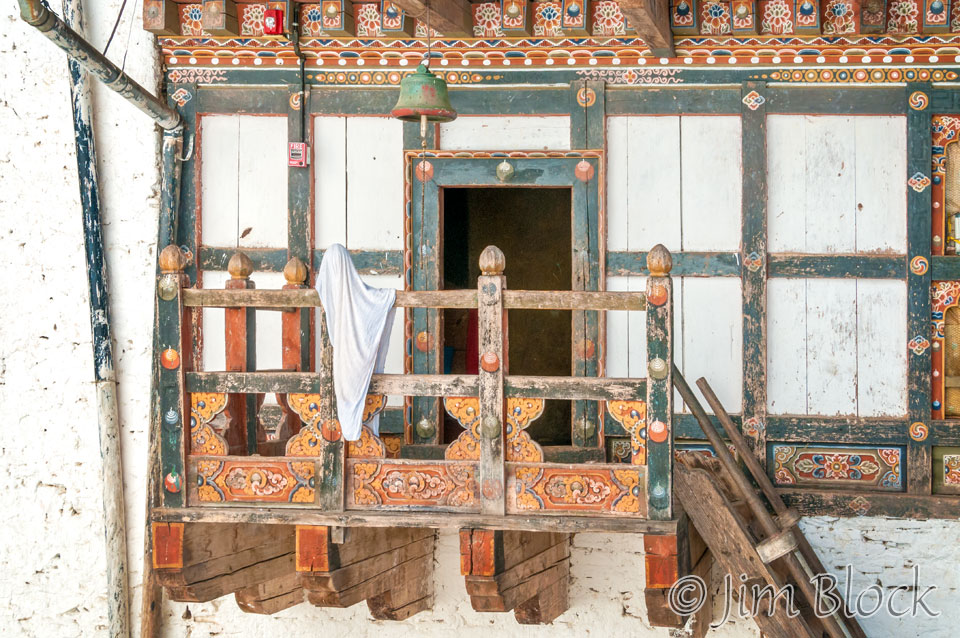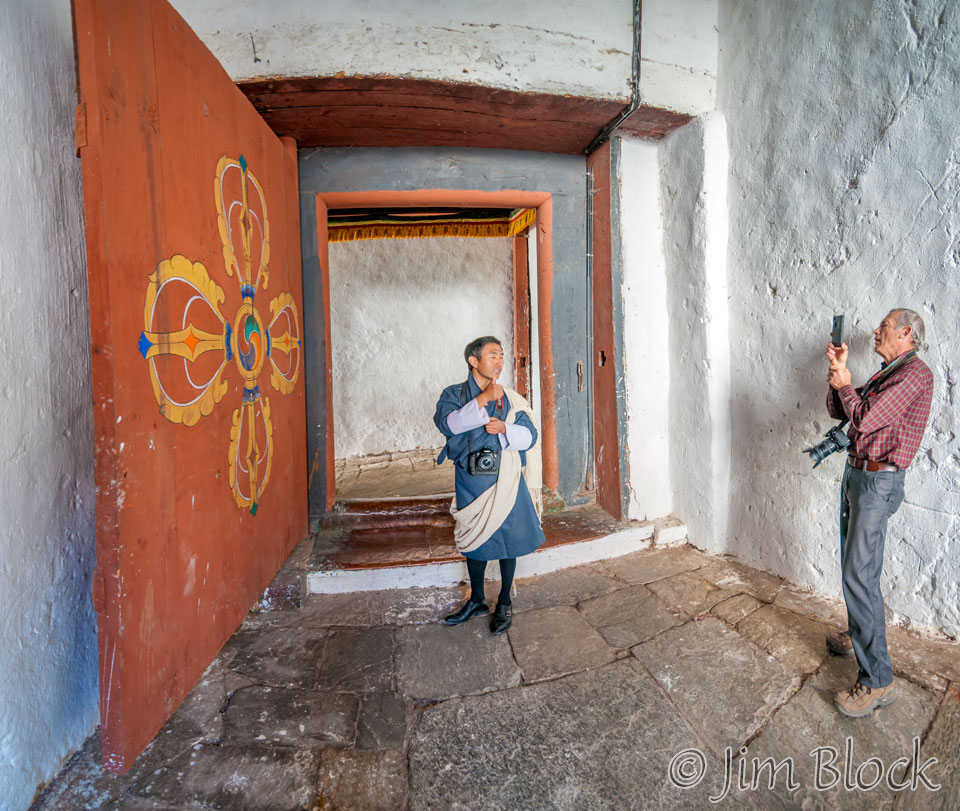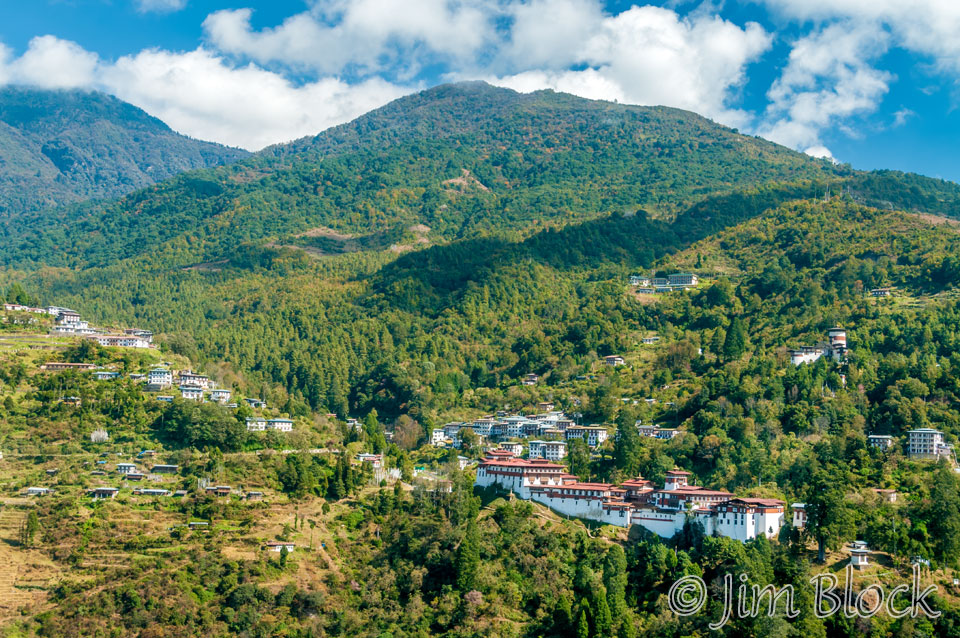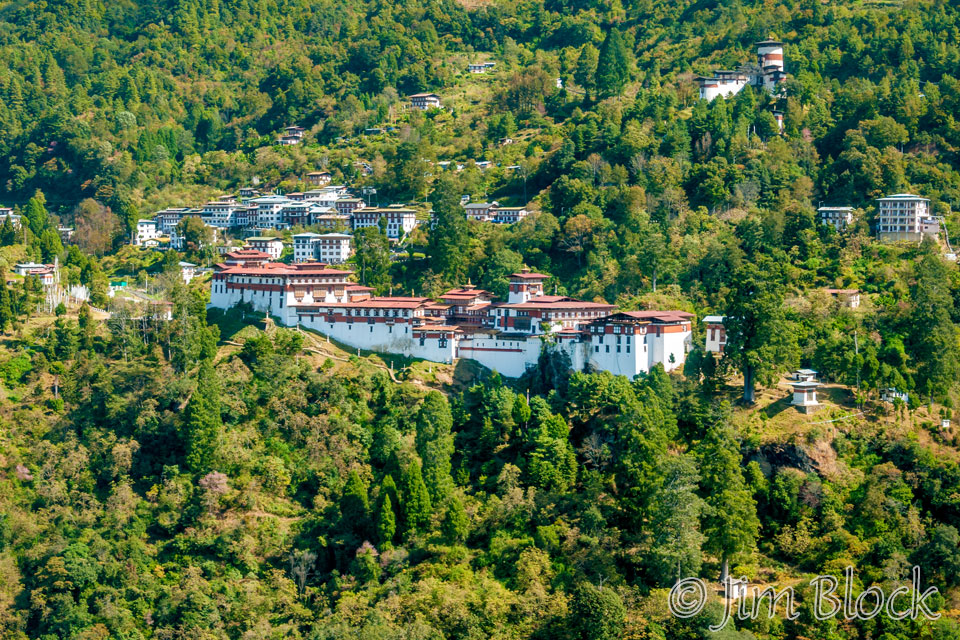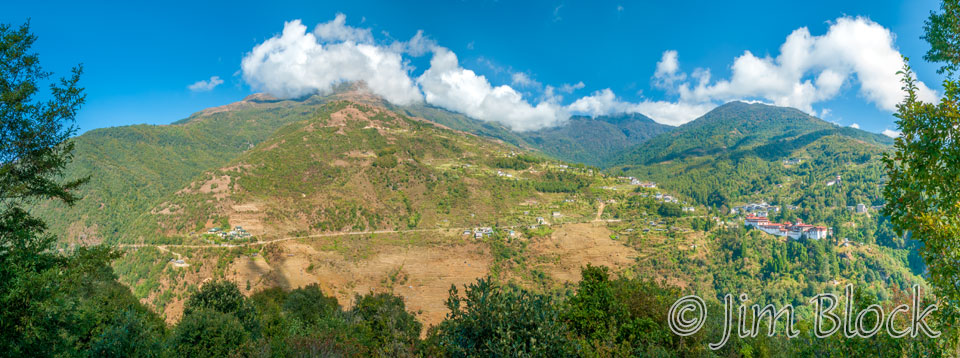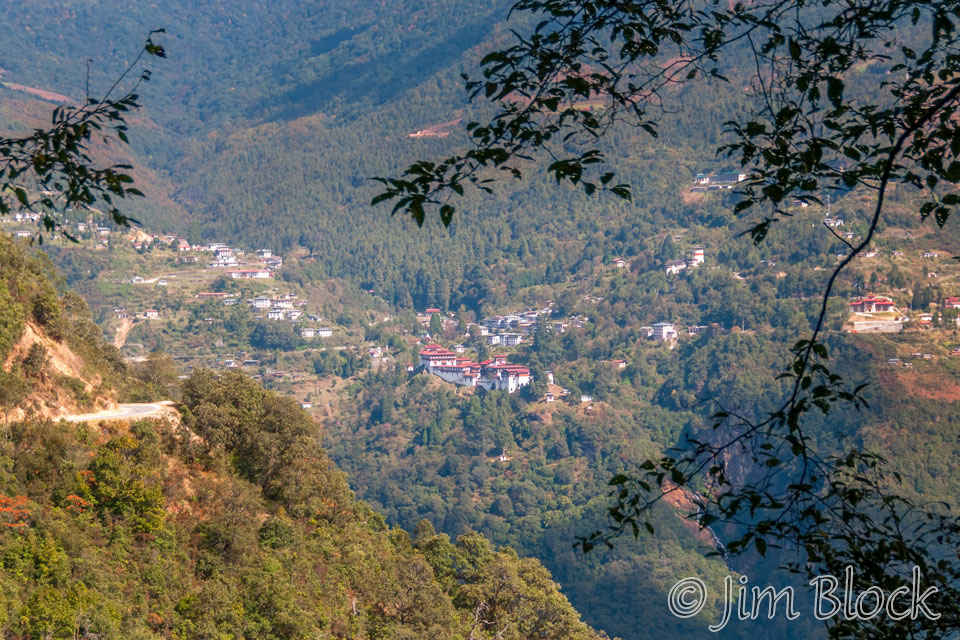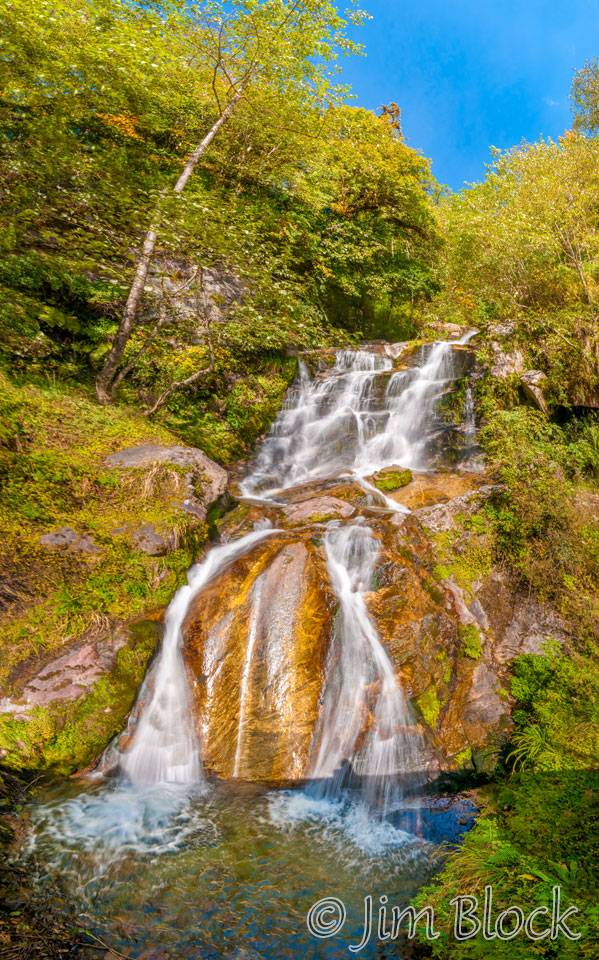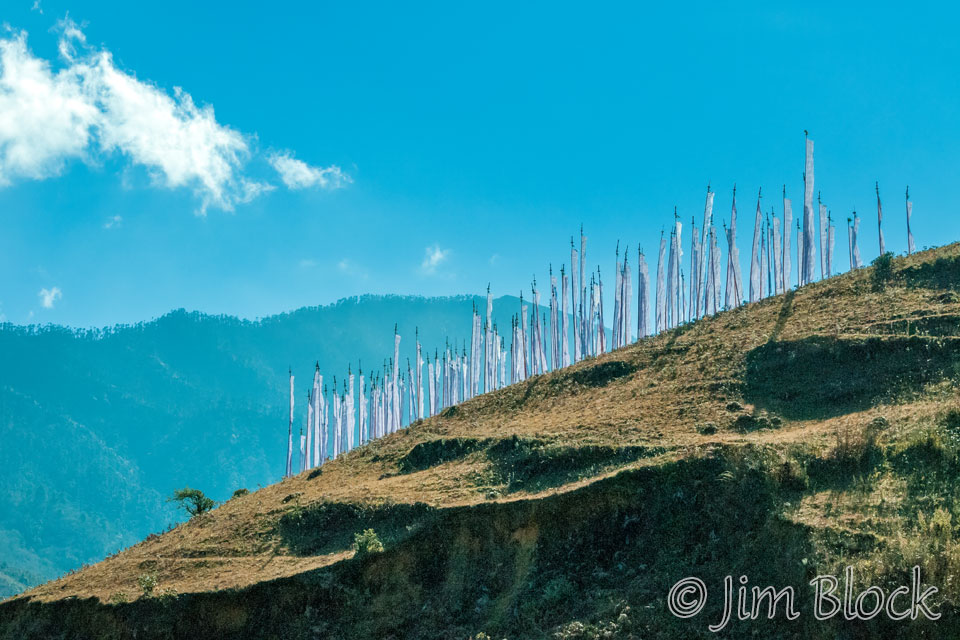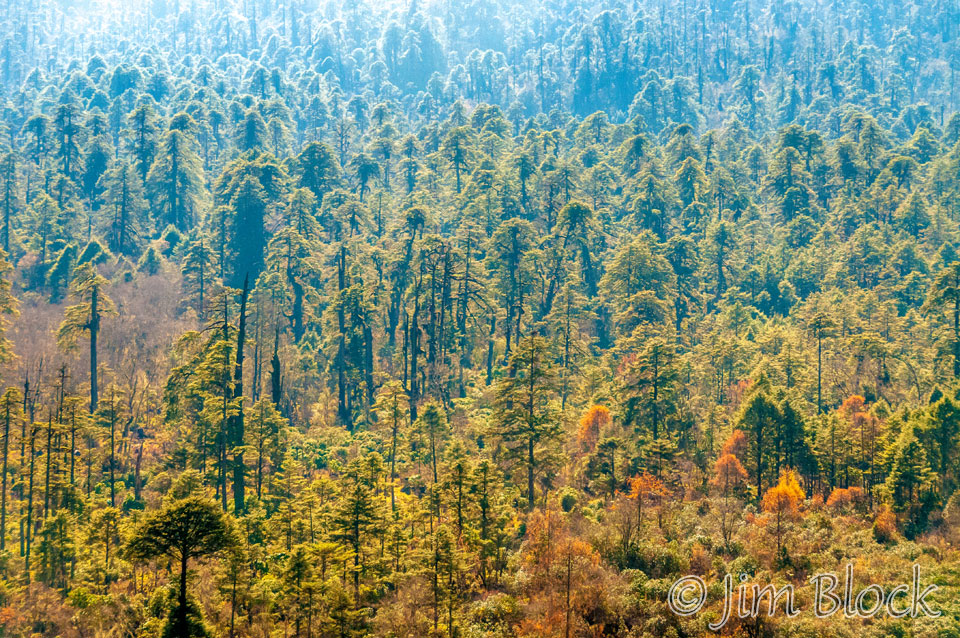The day started with our hostess at the River Lodge in Tang wishing us well with a toast of ara at 7:40 AM. By 8:30 we arrived at the Kunzangdrak Goemba just in time for the nuns to pile into the beds of two large trucks and head off to the Tsechu Festival featuring masked dancers at the Jambey Lhakang Temple in Jakar. After touring the nearly-deserted but beautiful goemba, we spent almost two hours at the festival ourselves, lunched in Jakar, then headed to Trongsa. Along the way we stopped at a wool factory and witnessed an archery match with traditional bows and arrows rather than more accurate crossbows. It was a dramatic drive along a mountain road.
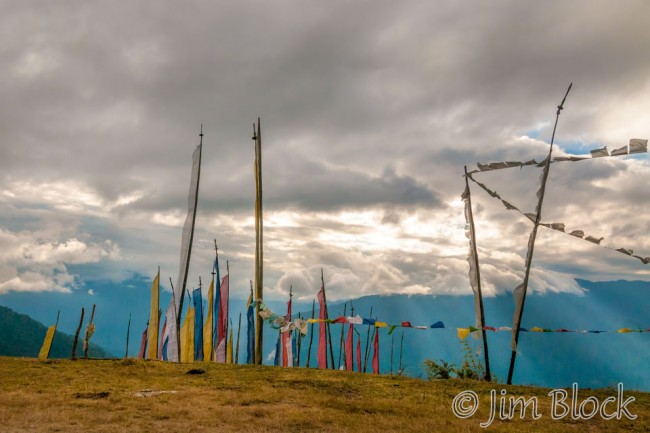
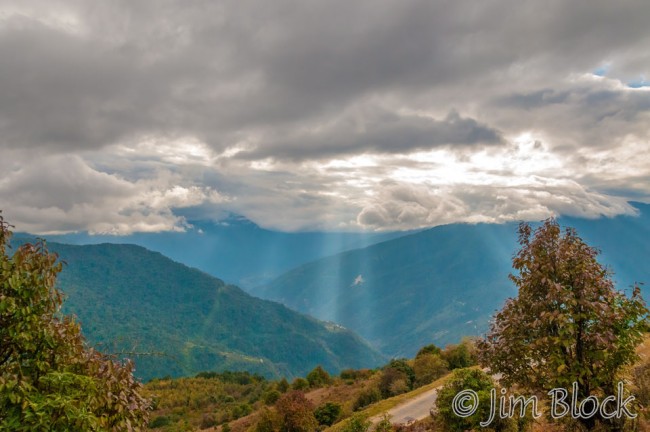
As we found to be the case for almost all roads in Bhutan, the road was very winding but beautiful. The faint yellow line in the Google Earth view below was our route from Jakar to Trongsa.
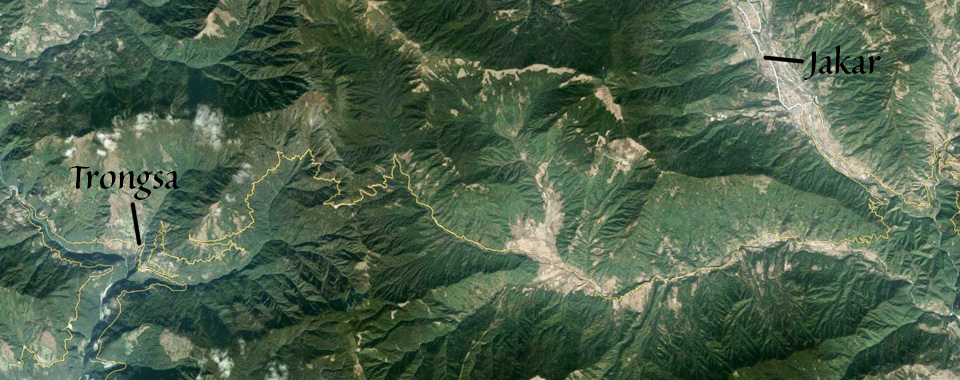
We stopped just outside the city to get an overview of where we were heading. Our hotel is along the road just above the modest dwelling in the photo on the left. It can be seen better in the photo on the right. The deep valley below the town and hotel is the Mangde Chhu valley. The next day we would drive up the valley a long way and then back along the other side.
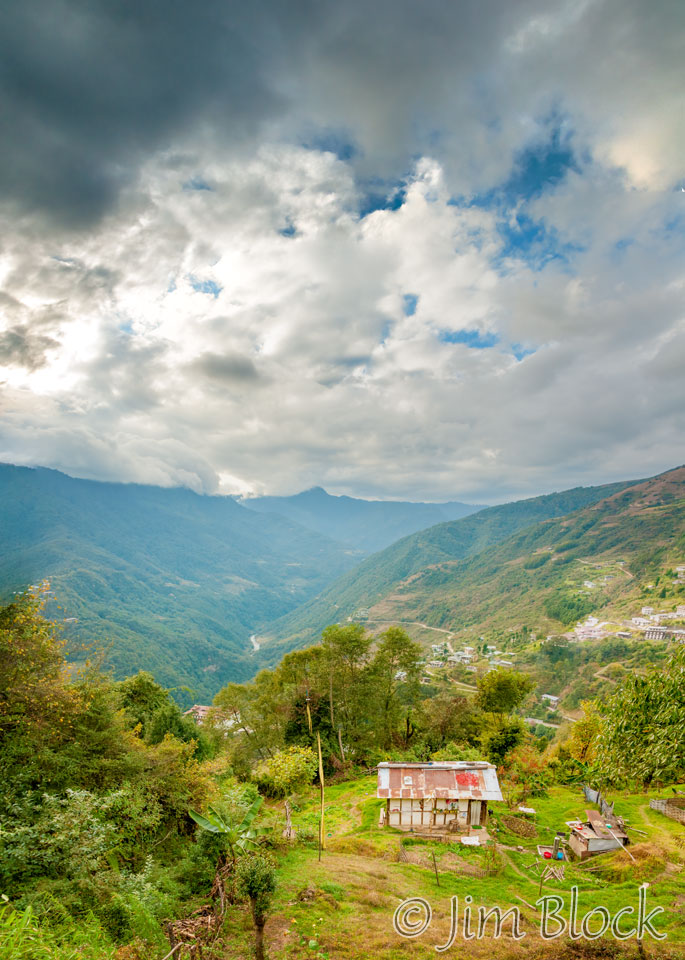
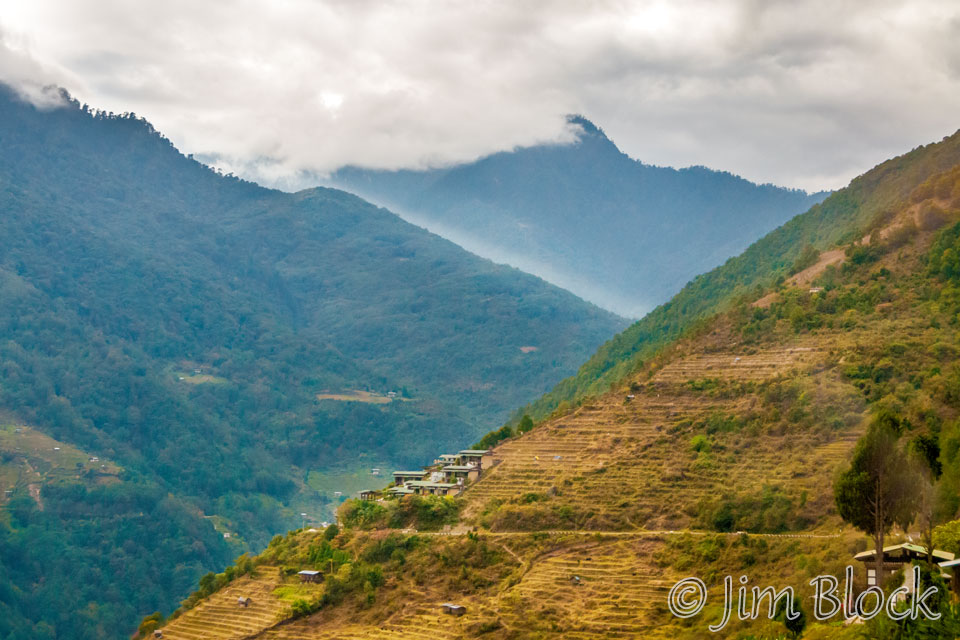
As we saw elsewhere in Bhutan, whenever someone came to carry our bags at a hotel, they were young women. In the photo below left you can see the Trongsa Dzong in the distance. In the photo on the right you see a ladder heading up to our room balcony. We didn’t have to take it — there is a nice curved stairway to the right. The ladder was for a pair of workmen who were installing a super-fast Wi-Fi Internet connection right outside our room. Someone (Dhamey?) must have called ahead and told them we had been without Internet for three nights and were desperate to connect to the world, or at least with our spouses to tell them that we were still alive after the wild roads of central Bhutan and a 10 hour hike from Ura to Tang.
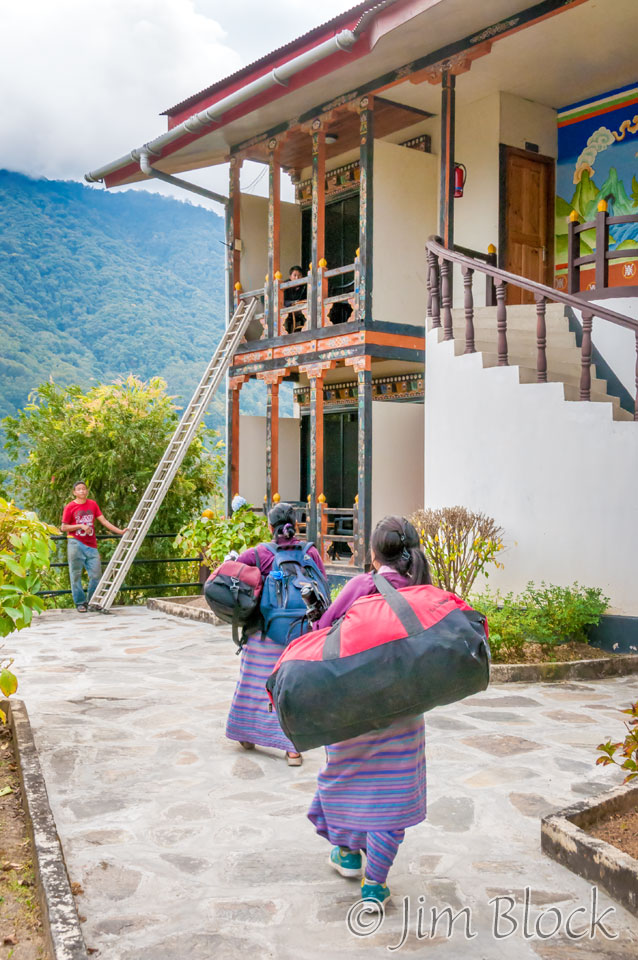
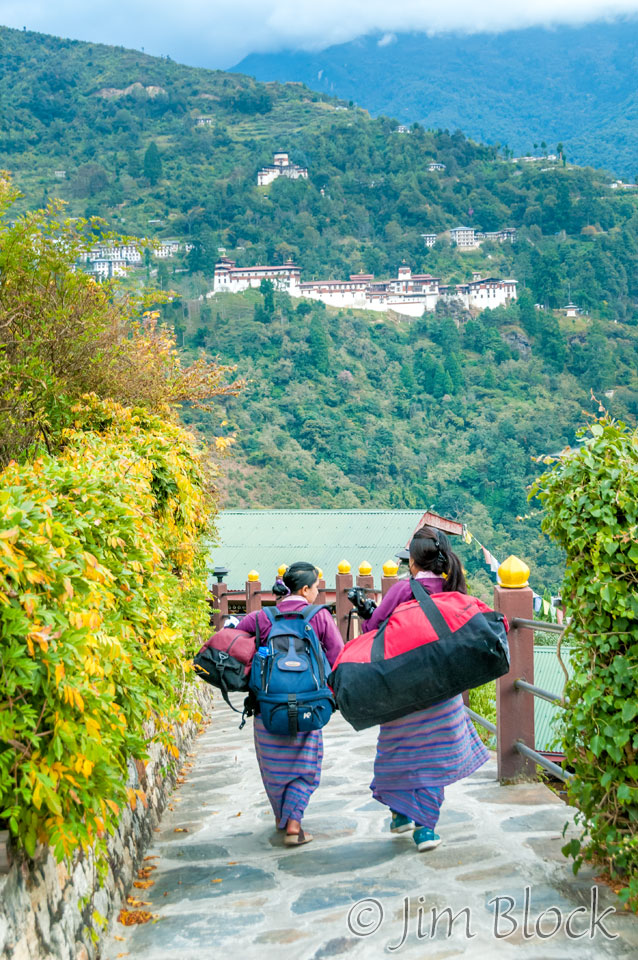
From our room we got a great view of the Trongsa Dzong. You can see it in both photos below, but better in the zoom at the right. Above it is the Tower of Trongsa (Ta Dzong), which now houses the Royal Heritage Museum
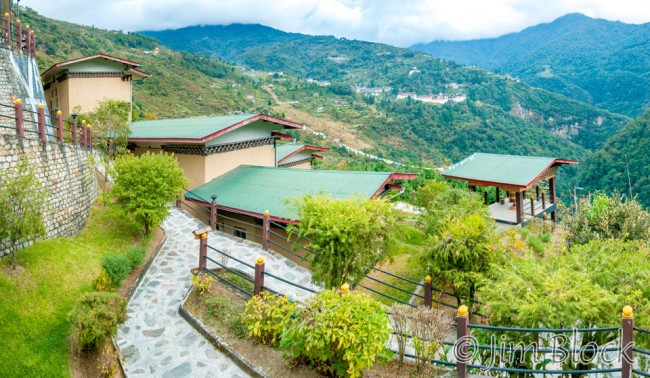
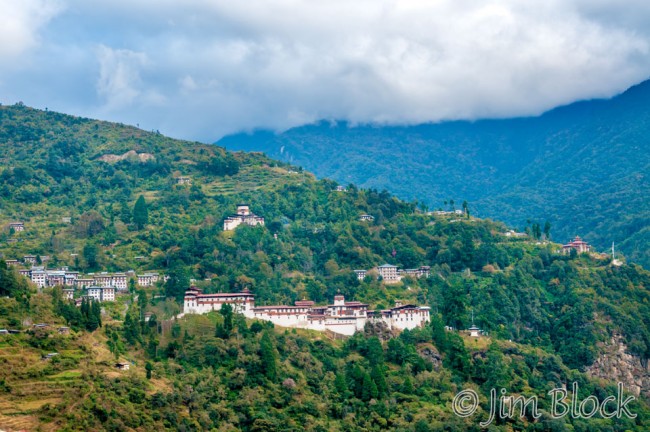
This was the most upscale hotel so far on the trip. It was far better than the noisy floors of our Paro Hotel, but it didn’t have the charm of the farmhouses in Haa and Ura which I will long remember as remarkable experiences. Here at the Yangkhil Hotel we ate excellent food with fine silver and china in a noisy dining room with 40 other chilips (foreigners). At Dr. Karma’s home in Ura we ate simple foods made of buckwheat while sitting on the floor with the family. That was enjoyable and more memorable.
The bathroom was beautiful and the shower was hot and wonderful. It is amazing how simple things can really feel good. The dining room featured photos of the Bhutan Kings, as we saw often. Unlike our Presidents, they are almost universally beloved in the country.
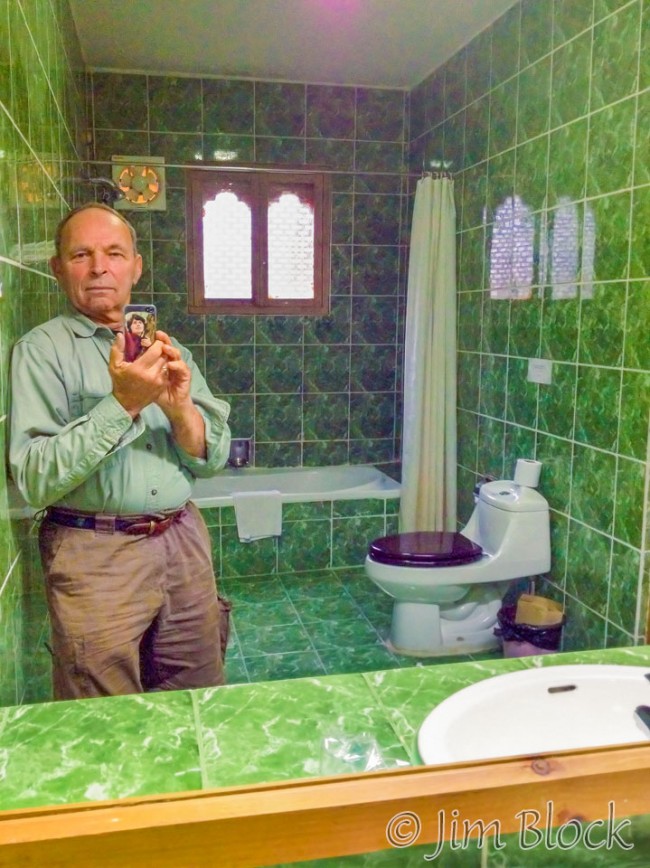
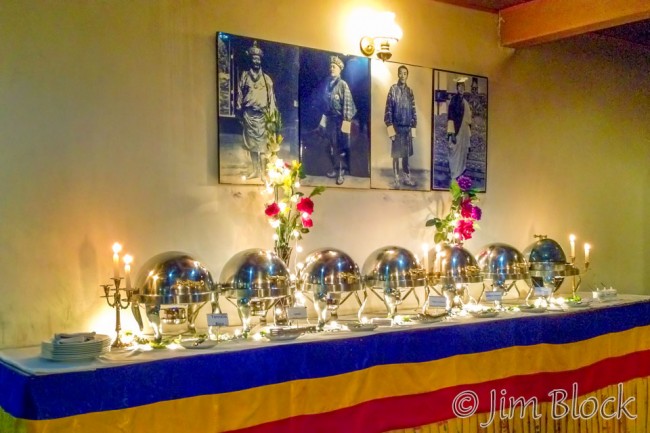
I took a photo of the Trongsa Dzong, the watchtower above it with the green lights, and the town from our room balcony then went inside to make some notes, read, and fell asleep for a very restful 8 hours.
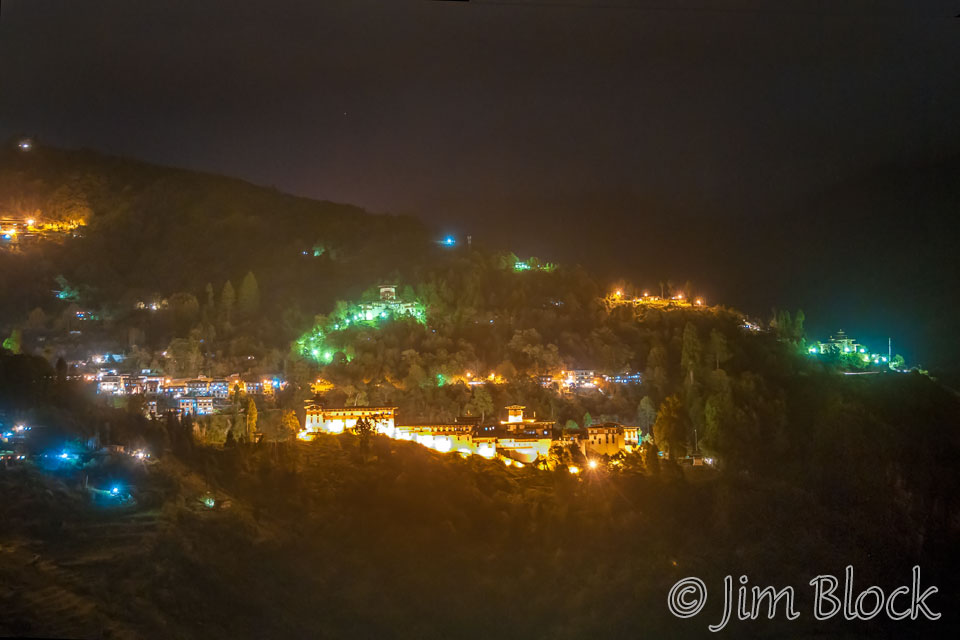
The next morning, while I made a time-lapse movie from my balcony, I wandered around the hotel grounds. In the photo on the left you can see my phone in the bottom left corner recording a time-lapse of a sunrise over Trongsa.
All the people in the dining room last night arrived on these buses. I’m sure glad we could stop our car whenever we wished and also deviate from our itinerary to take advantage of opportunities, like a puja and tour of Phomdrong.
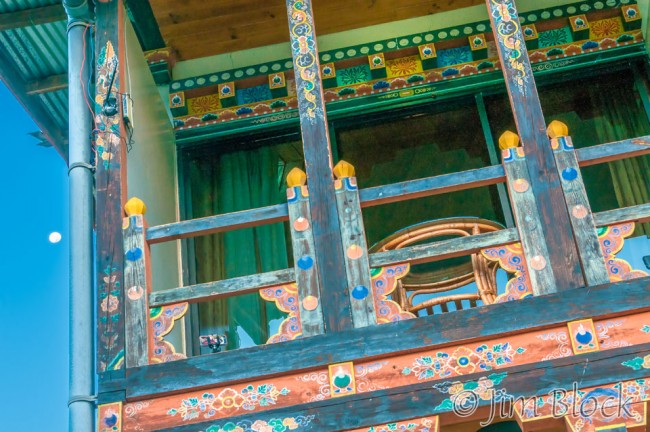
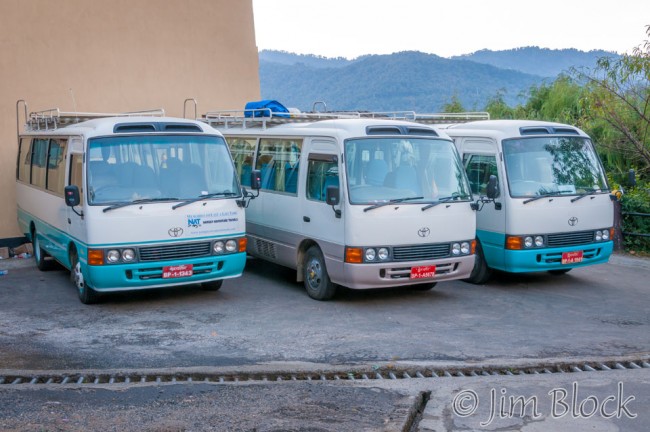
Prayer flags are important to the Buddhists of Bhutan. But our guide, Lakey, took exception to their overuse, especially hundreds of strings very old ragged-looking prayer flags decorating bridges. Below the prayer flags look a bit like wash on a sagging line.
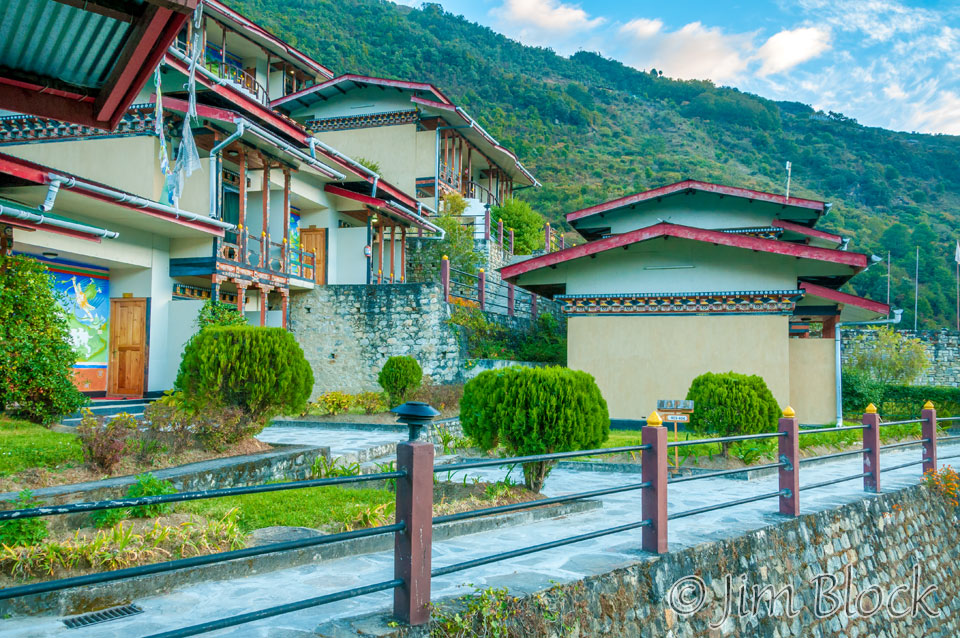
Incense offering in the morning is common in Bhutan. Leaves of fern or juniper, or the branches of coniferous trees, rhododendron, and red or white sandalwood are burned in a large urn-shaped burner. The downside of this practice is temporary localized air pollution. I remember my first morning walking around our farmhouse lodging in the Haa Valley seeing all the smoke in the valley.
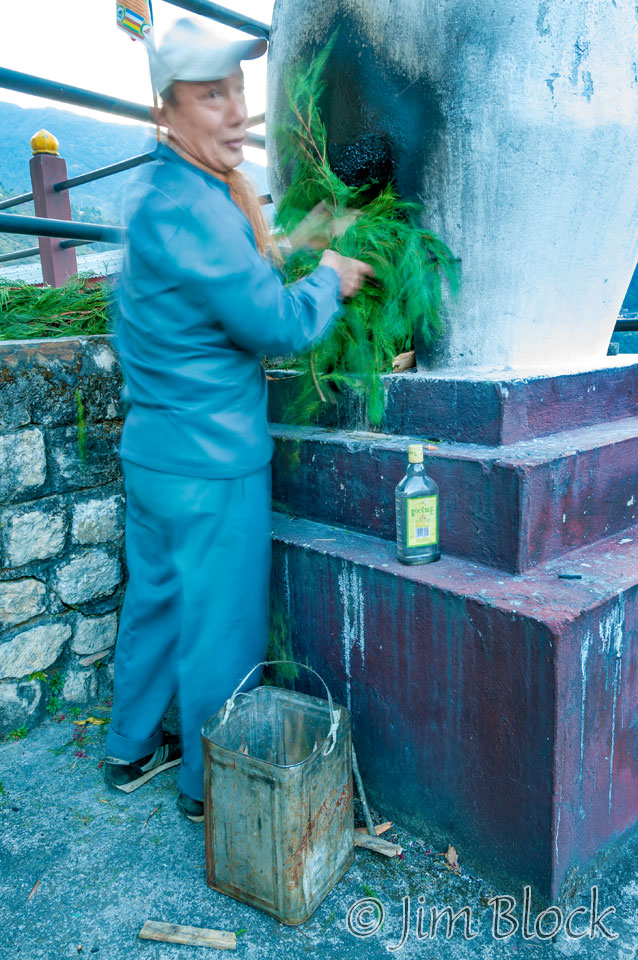
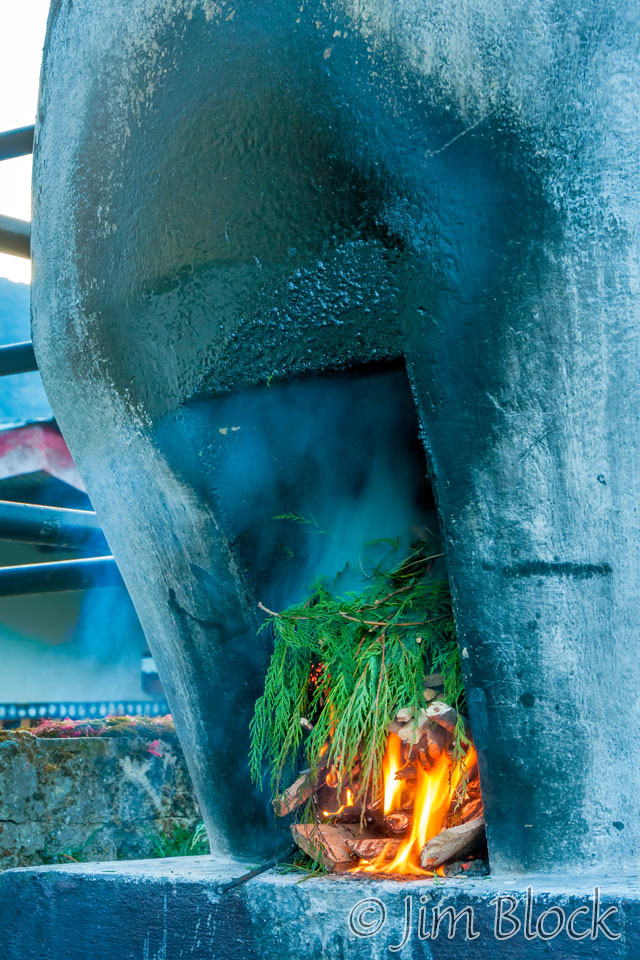
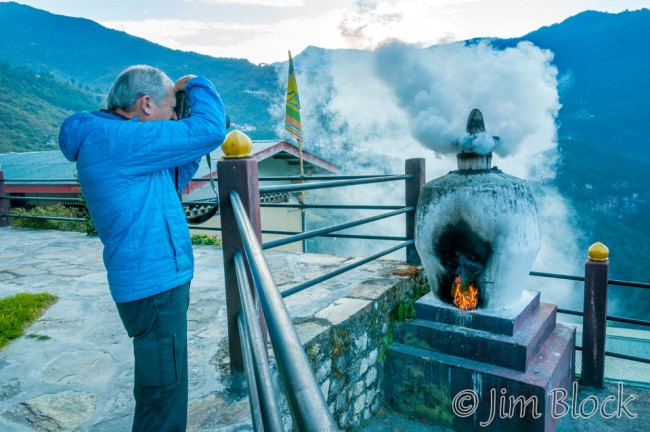
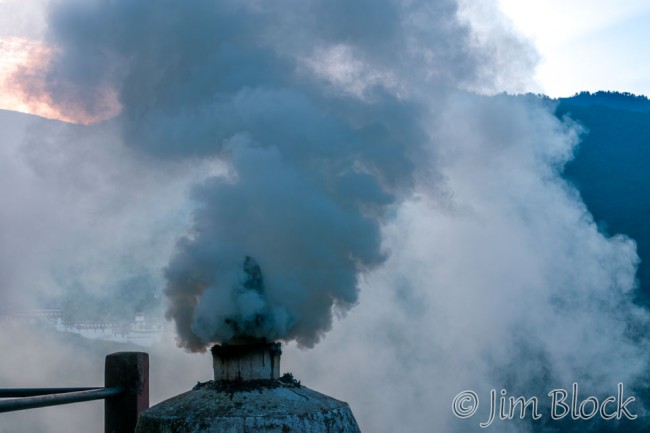
The photo on the right below shows a phenomenon I observed in the mountains near Lukla and in New Hampshire. It can be a puzzle. How can the shadow of the top of the urn be on the smoke behind the urn when the sun is behind the urn?
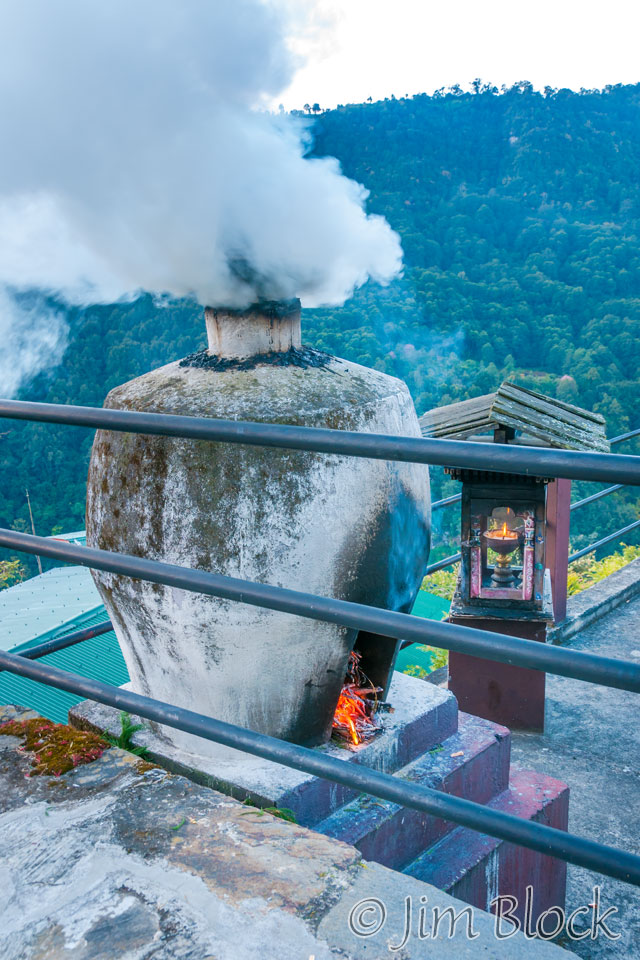
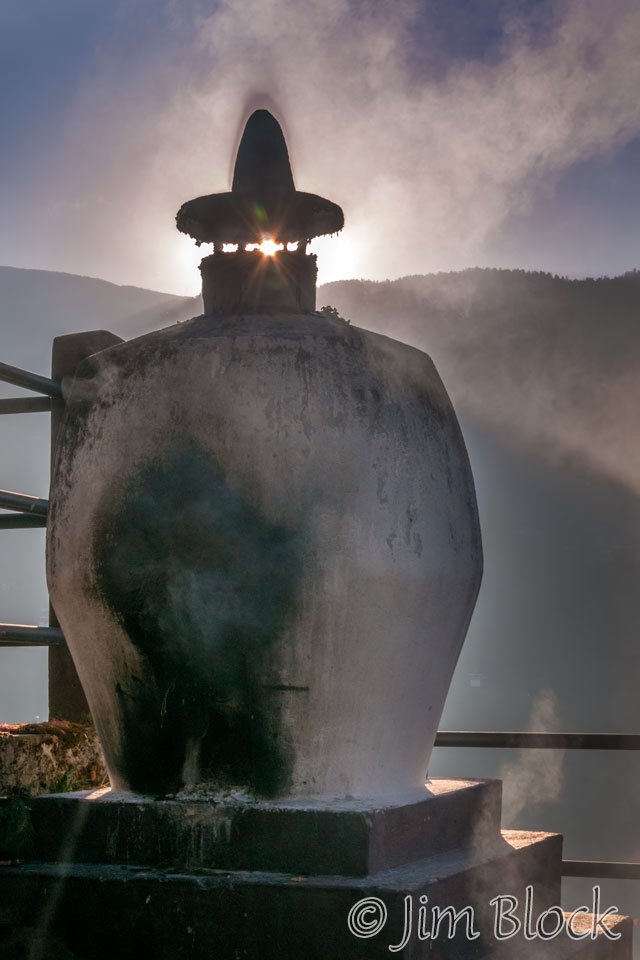
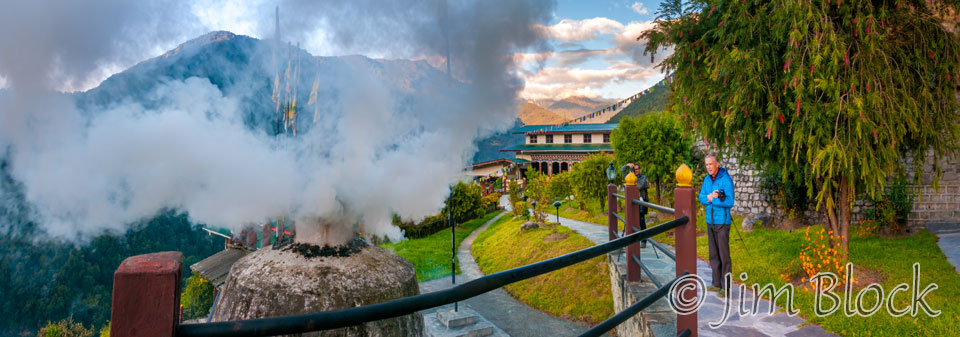
We had a room that was well placed for a great view toward Trongsa and the dzong. And the Wi-Fi was fast and responsive since the transmitter was located on our balcony as shown in the photo on the right.
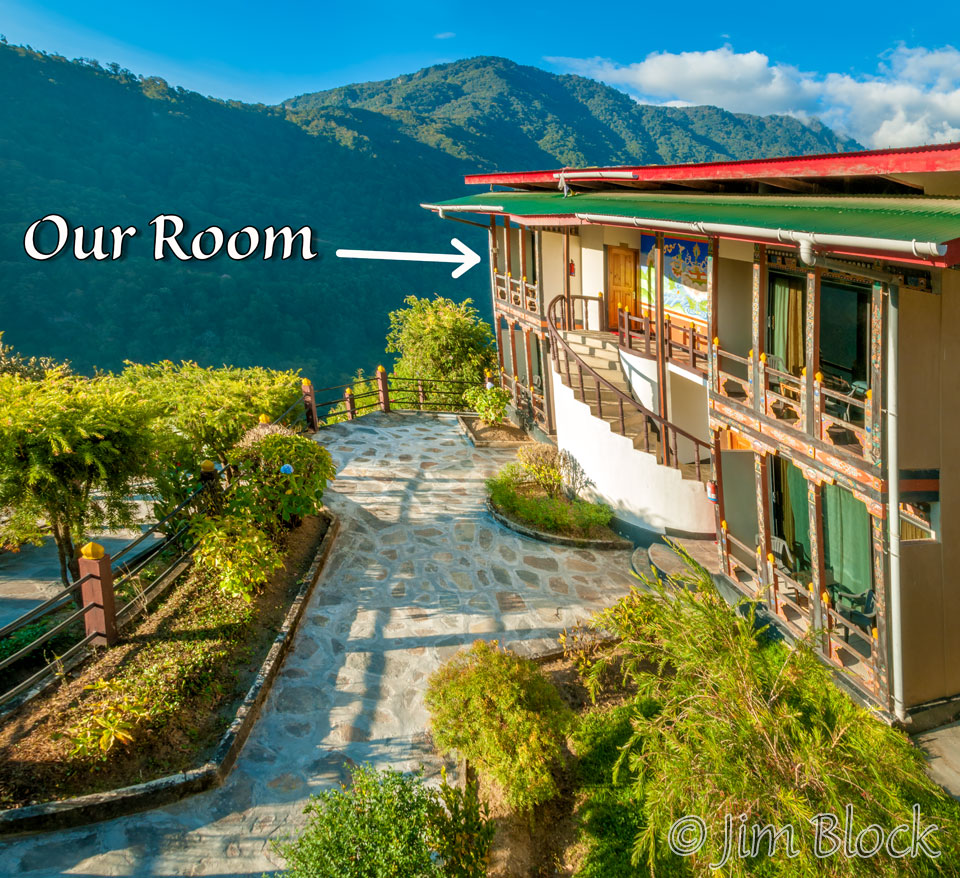
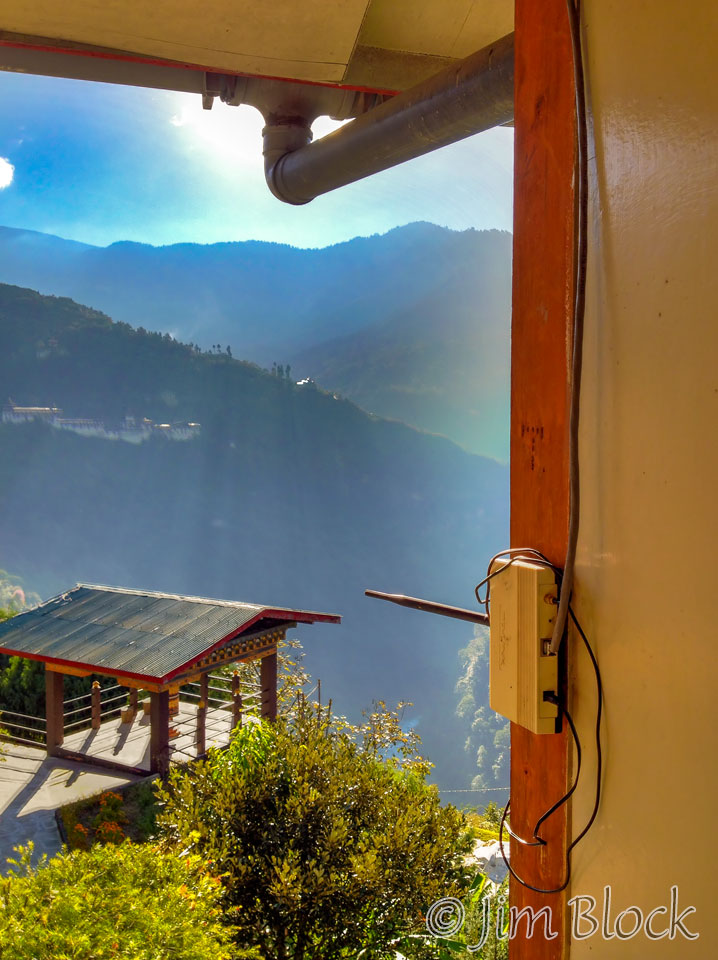
My notes record that we finished Kencho’s very tasty ara last evening with dinner (but more magically appeared later in the trip). Breakfast included excellent waffles, oatmeal, an omelet, apple juice, toast, and bananas fried in their skins (which I skipped). After breakfast I sat for a while in the warm sun on our balcony.
Here is the Trongsa Dzong from our balcony at around 8:15 AM. Above it you can see the watchtower that we visited, followed by a tour of the dzong.
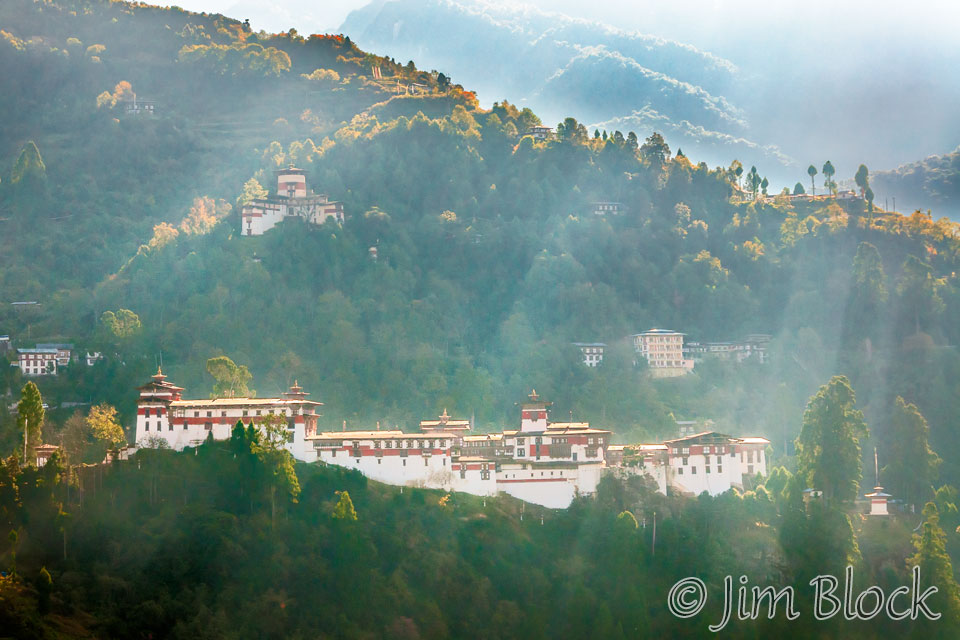
We packed the car and headed down the road to the Tower of Trongsa, Ta Dzong. But first we stopped along the road to make some photos of the valley to the south.
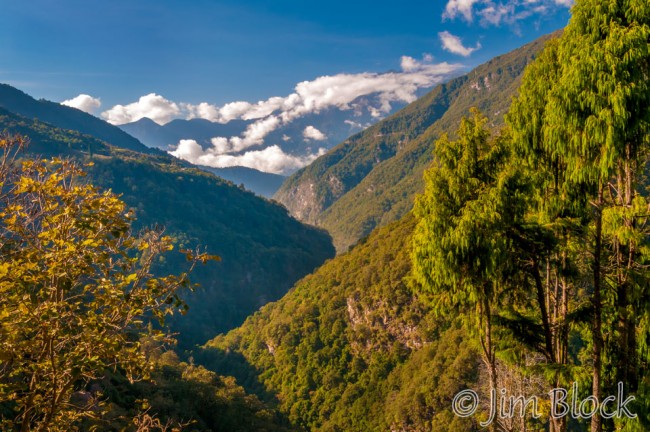
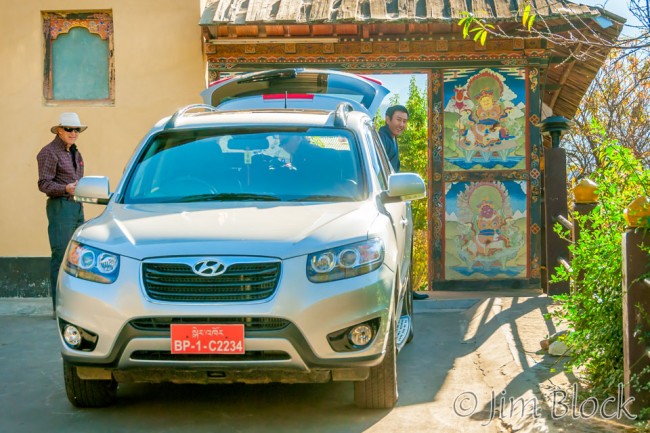
The tower was built in 1652 to warn the residents of the dzong below it of invaders. It has been converted into the Royal Heritage Museum.
Below are views of the Trongsa Dzong and our hotel from the area of the watchtower. In the right hand image our hotel is along the road above the centermost of the three obvious peaks on the dzong roofs.
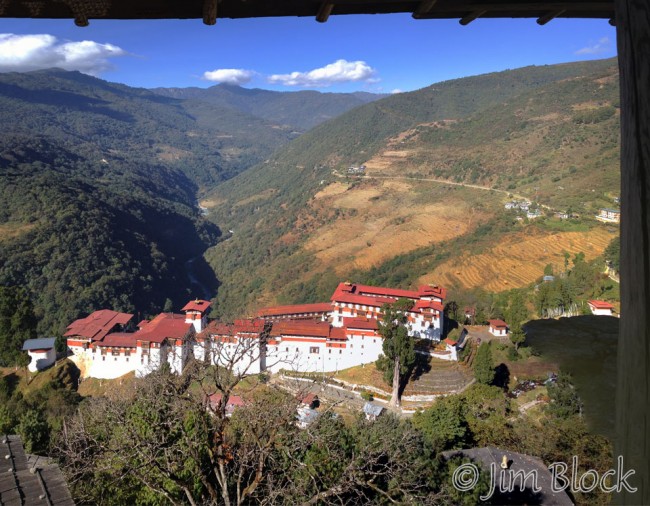
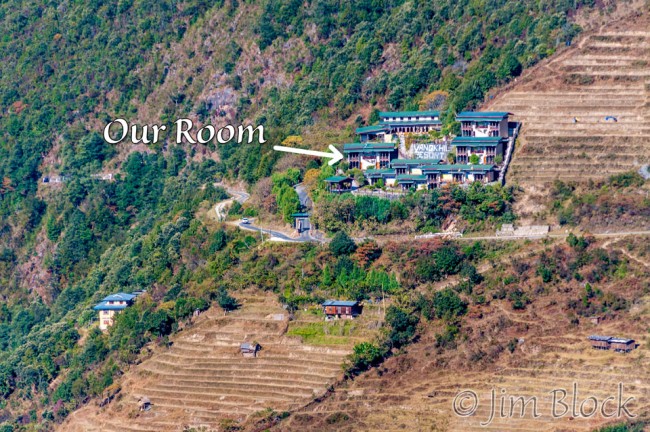
Below are two view of the Tower of Trongsa. Unfortunately, I cannot show you any photos from inside this fascinating building.
Bhutan is a wonderful country with very friendly people. It is also quite structured and regulated, which has some downsides, especially for photographers. No photos are permitted in museums or temples. I can perhaps understand the restriction on Buddhist temples, though such restrictions are not in place in most temples in Nepal. I have trouble understanding the restrictions on photography in national museums. That is why visiting the private museum, Ogyen Choling, in Tang was such a great joy.
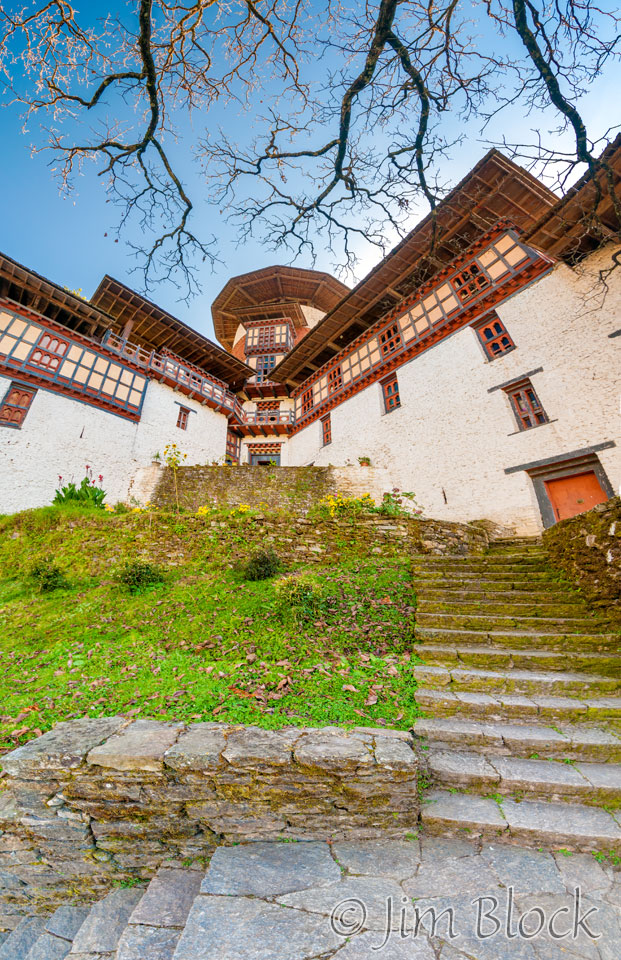
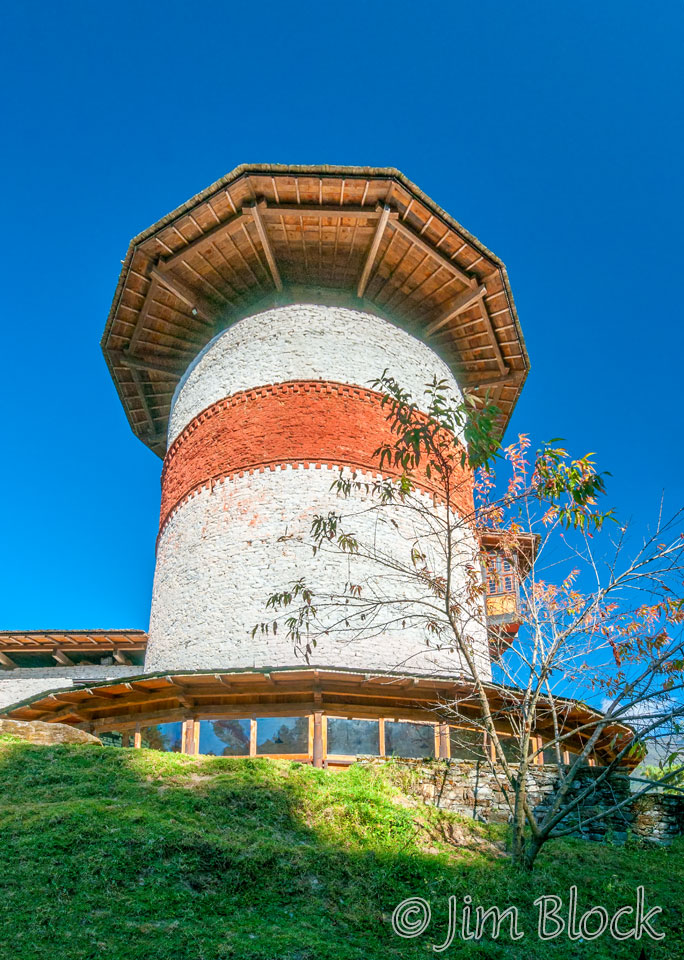
From the tower we strolled through town. It was filled with characteristic small shops and plenty of dogs.
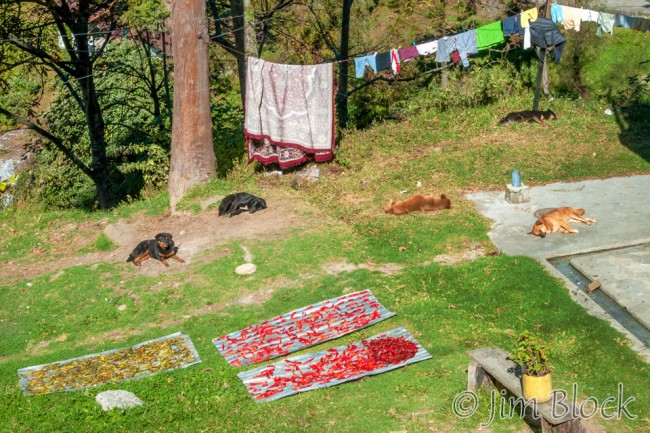
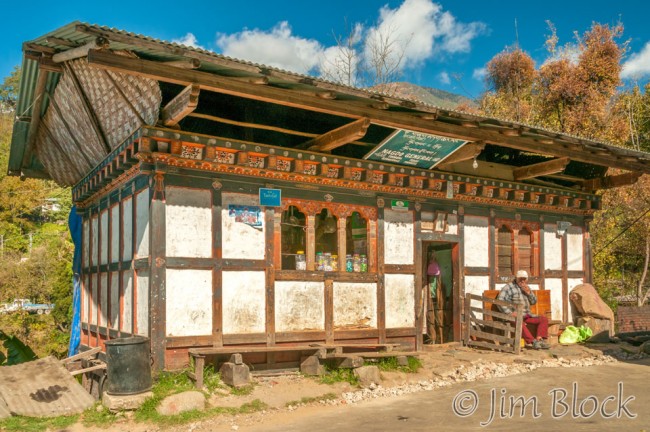
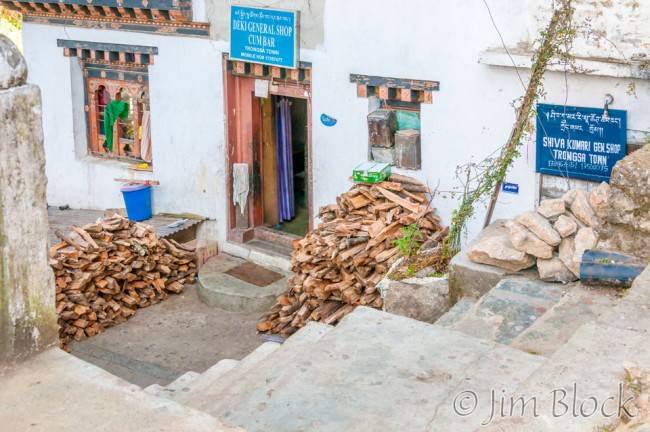
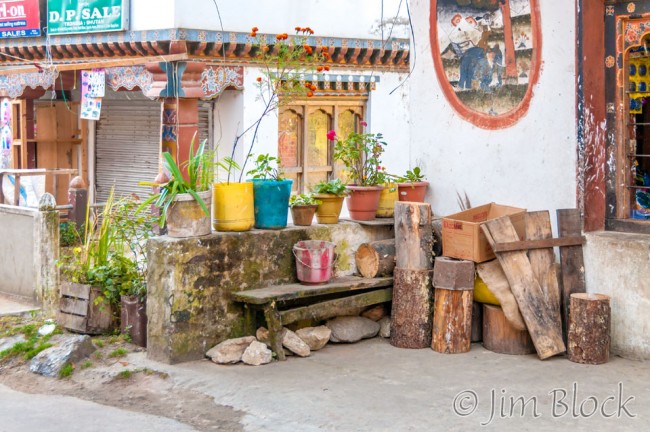
The walk to the Trongsa Dzong brought us in from above which gave us great views of the dzong, something we would not have had if we had driven to the parking area near the dzong.
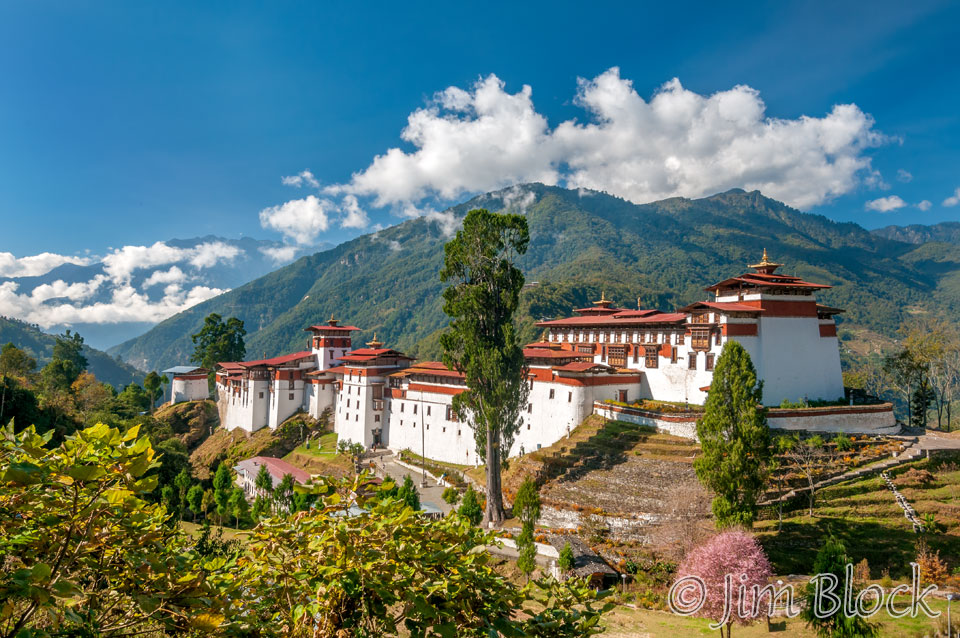
Here is a painterly version of the beautiful Trongsa Dzong.
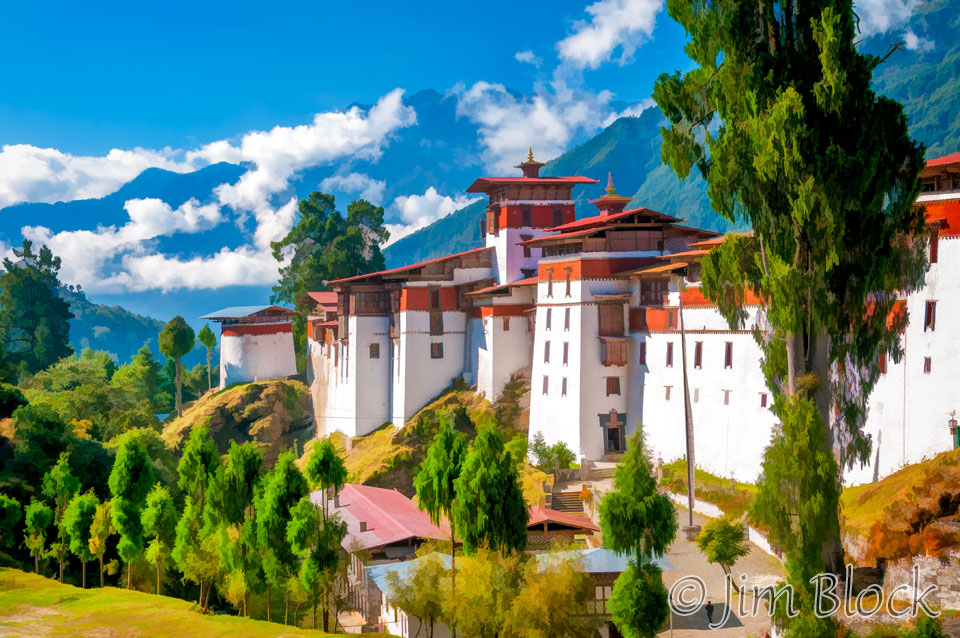
Outside the dzong was a huge tree that can be seen in the photos above. At its base was a warning sign, “(Caution) Be Aware of Falling Branches”. Maybe the dzong, or the king, doesn’t want to get sued if a branch should ever fall. And then there was the sign about formal attire, whatever that means. But Lakey did put on a special huge scarf so perhaps it just applied to non-chilips.
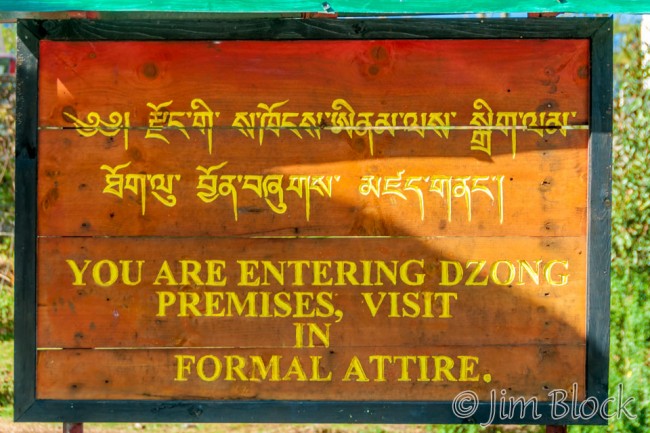
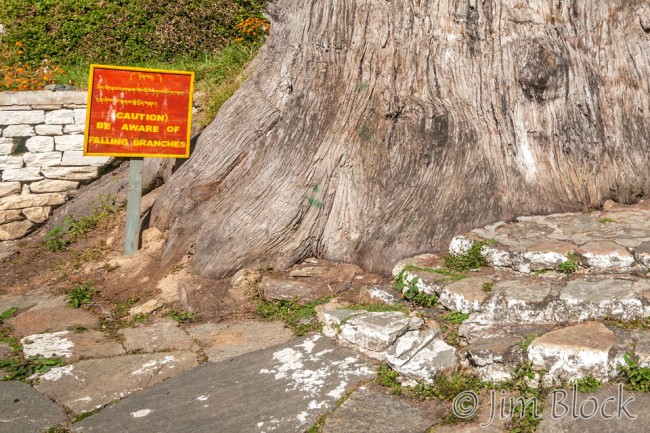
Inside, the dzong was quite impressive.
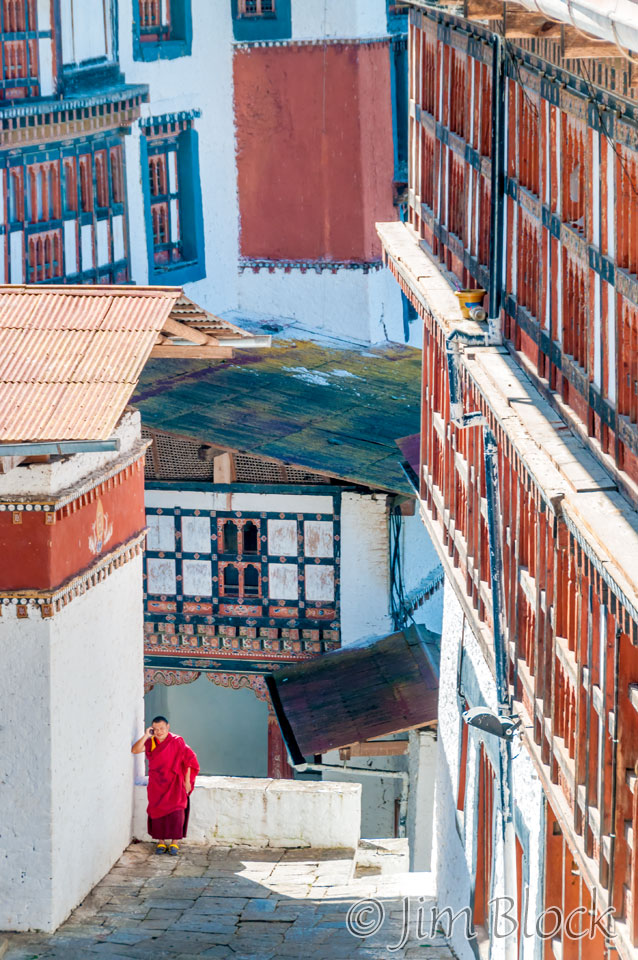
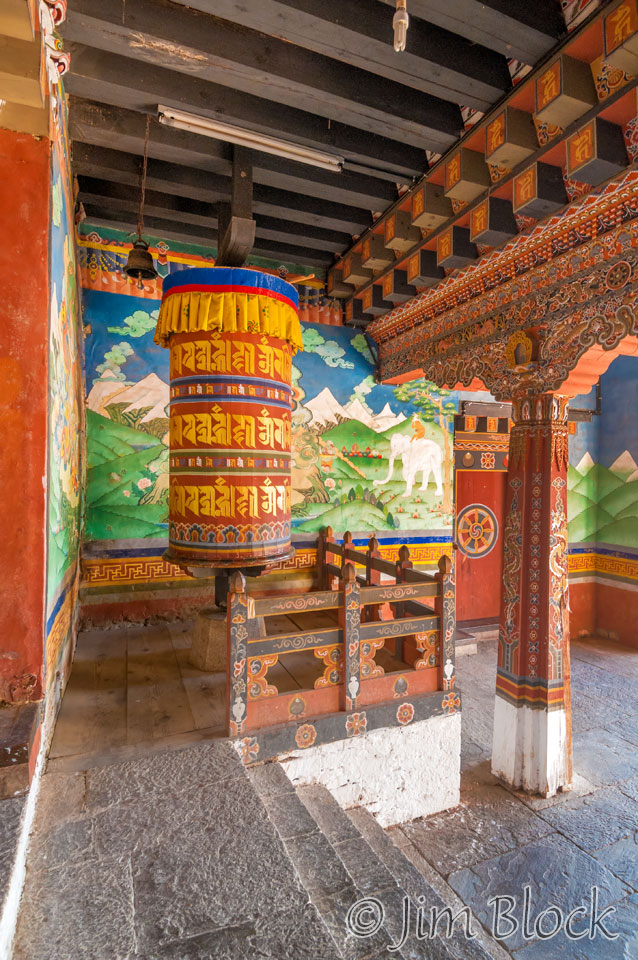
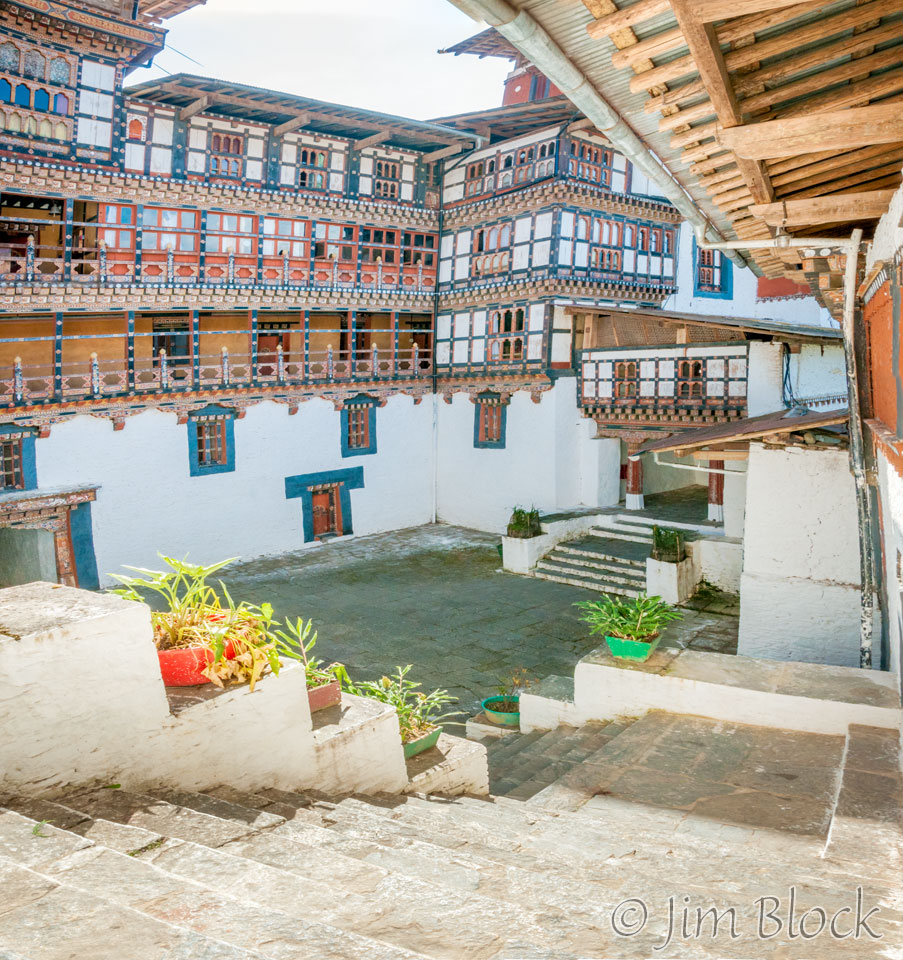
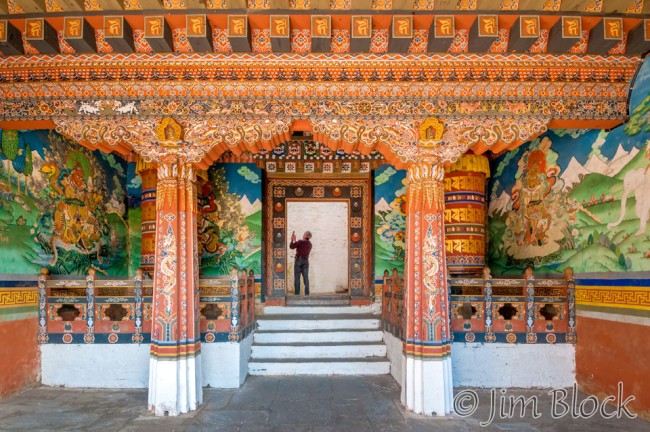
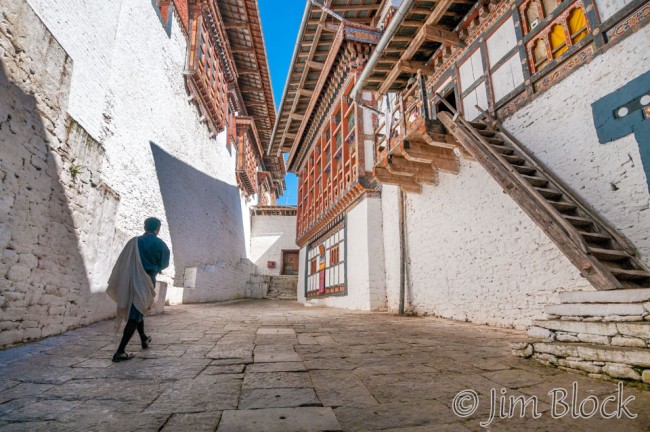
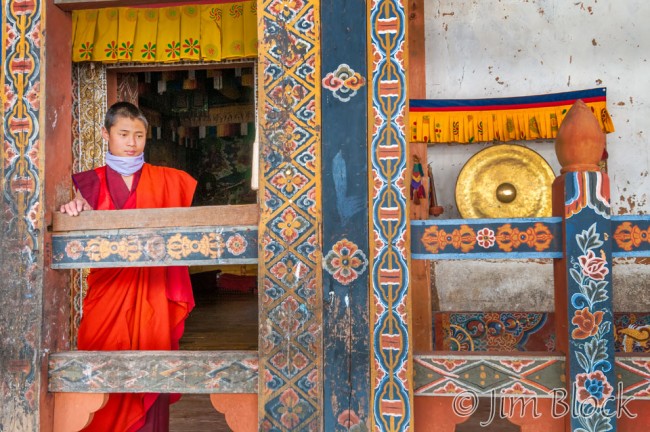
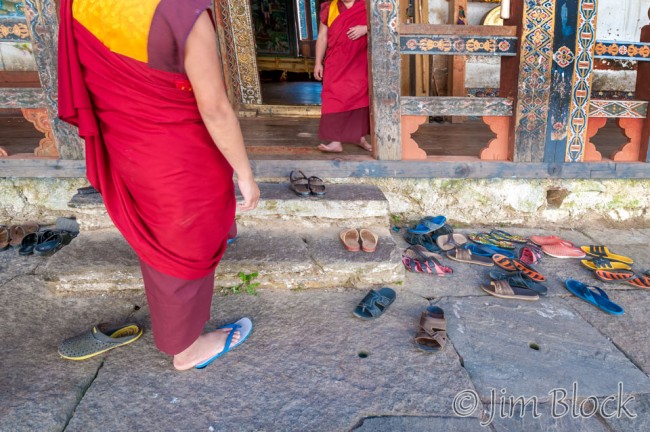
We departed Trongsa town to make a long trip west up the valley only to cross the Mangde Chhu and return on the other side. This screenshot below shows our crooked route into and out of Trongsa.
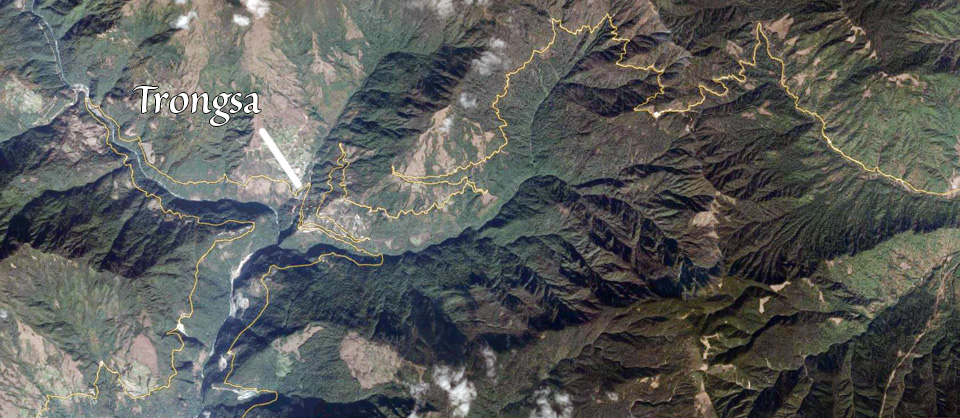
At the head of the valley to the west we reached a checkpoint. All vehicles had to stop so they could check something or other — after all that must be what they do at checkpoints. Note the way they hold the gate at the checkpoint open.
I used the opportunity to photograph some rapids in the Mangde Chhu.
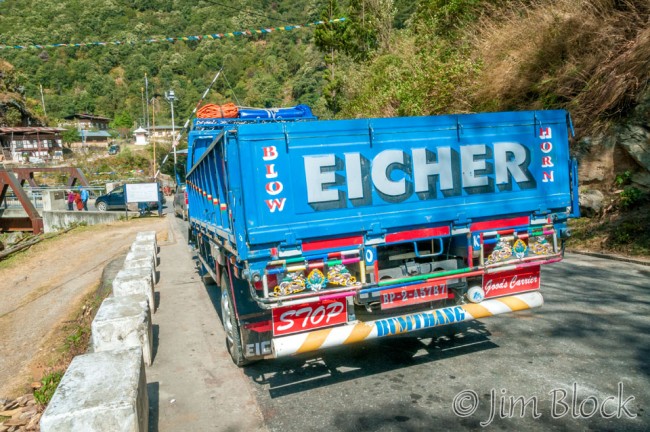
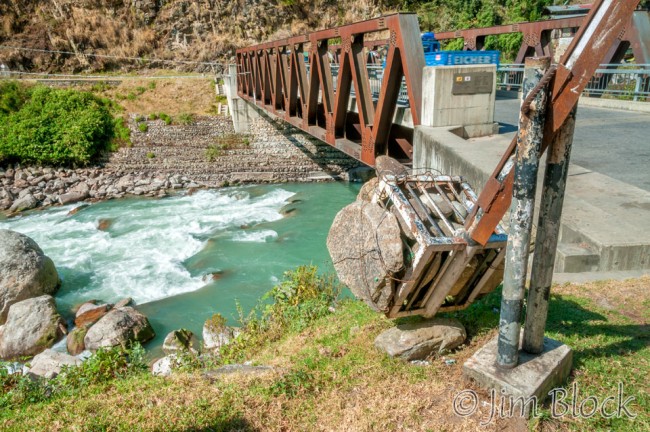
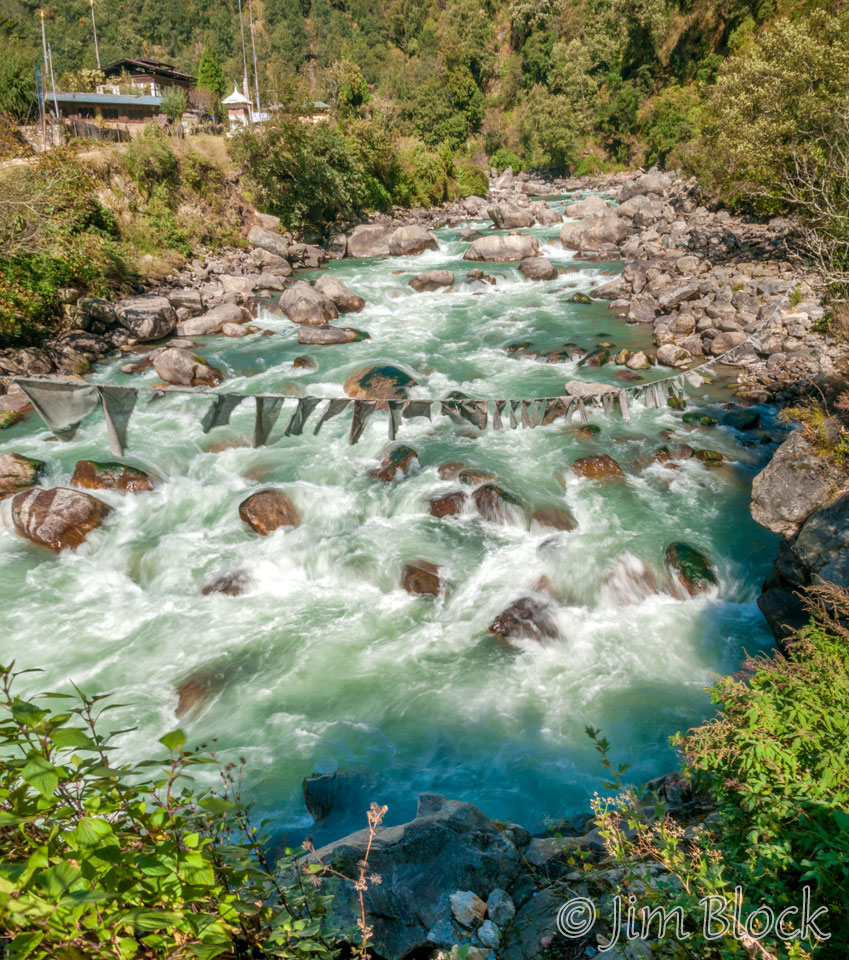
When we returned down the valley we got some excellent views of our hotel, the dzong, and the watchtower.
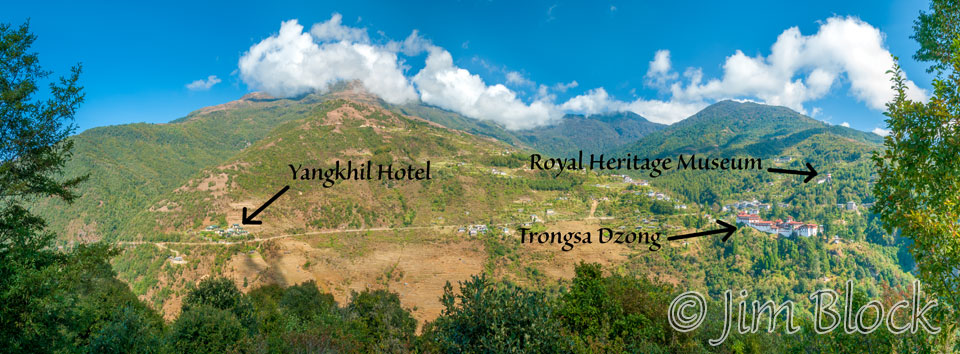
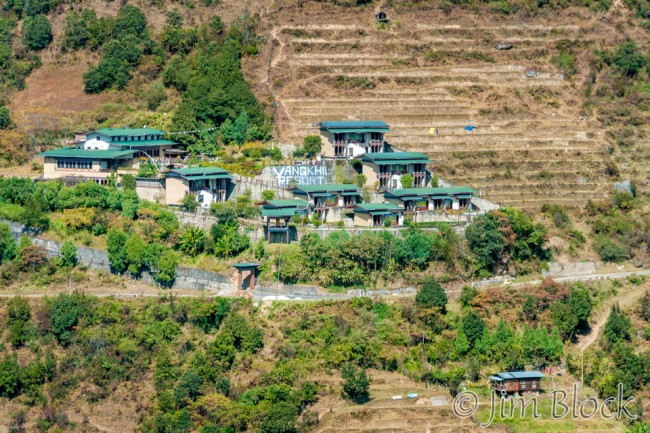
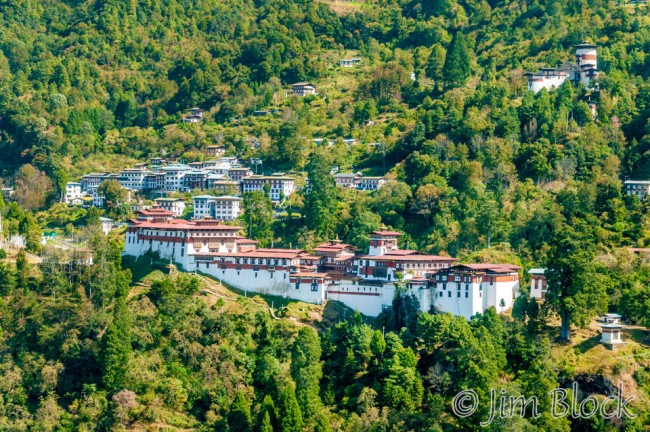
This is the overview spot.
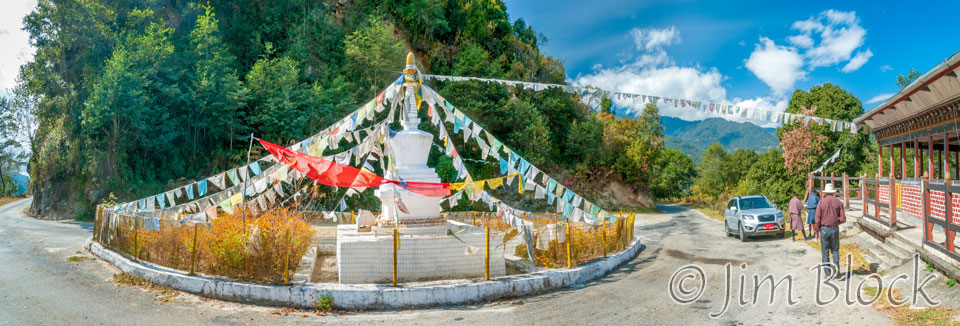
During the whole trip, Lakey was very conscious about the Bhutanese propensity to litter. Here he is using a makeshift broom to sweep it into a pile. Most of the time on hikes he would carry a plastic bag and fill it as we walked. I gave him several of my large Co-op food store bags. Interestly, Bhutan has outlawed plastic bags so you don’t get them with groceries or other purchases. But obviously they have not outlawed plastic water bottles.
A short distance ahead we passed one of the many stupas in this country. Many have special lanes so cars can pass on the left of them — a Bhuddhist practice — but this one was the exception sitting on the edge of a cliff.
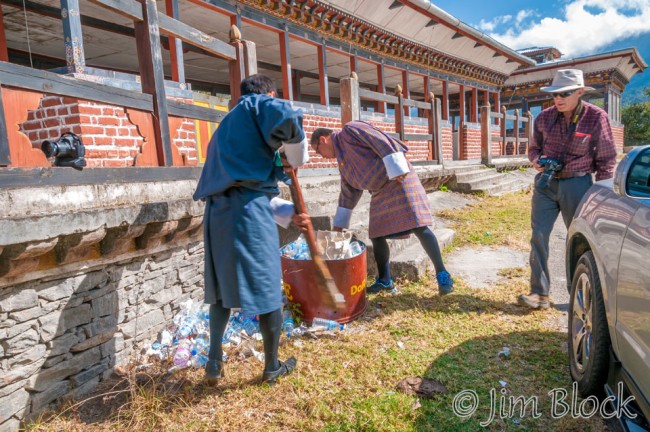
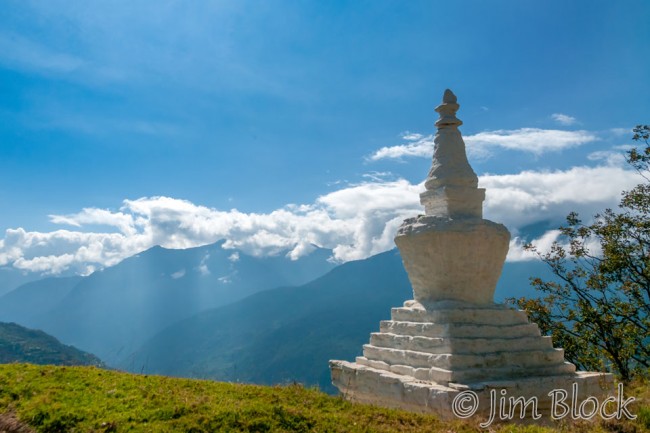
We were heading to the Phobjikha Valley for the Black-necked Crane Festival the next day. Here is an overview of our route. We had lunch in Chendebji, about the only place along the way. We crossed the Pele La and then turned south along a rough road to our hotel for the night, the Dewachen. The Gantey Gompa (monastery) is the site of the festival. We hiked to the festival along a beautiful trail that started to the east of our hotel.
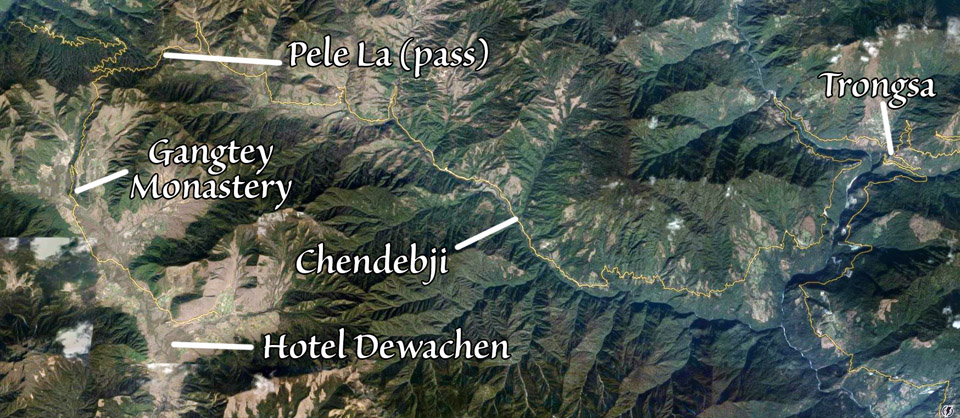
Shortly before we reached Chendebji, where we had lunch, we passed a beautiful waterfall. I had to make some photos so we stopped briefly. The joy of a small personal tour. We were standing on a bridge. You can see its shadow at the bottom of the photo.
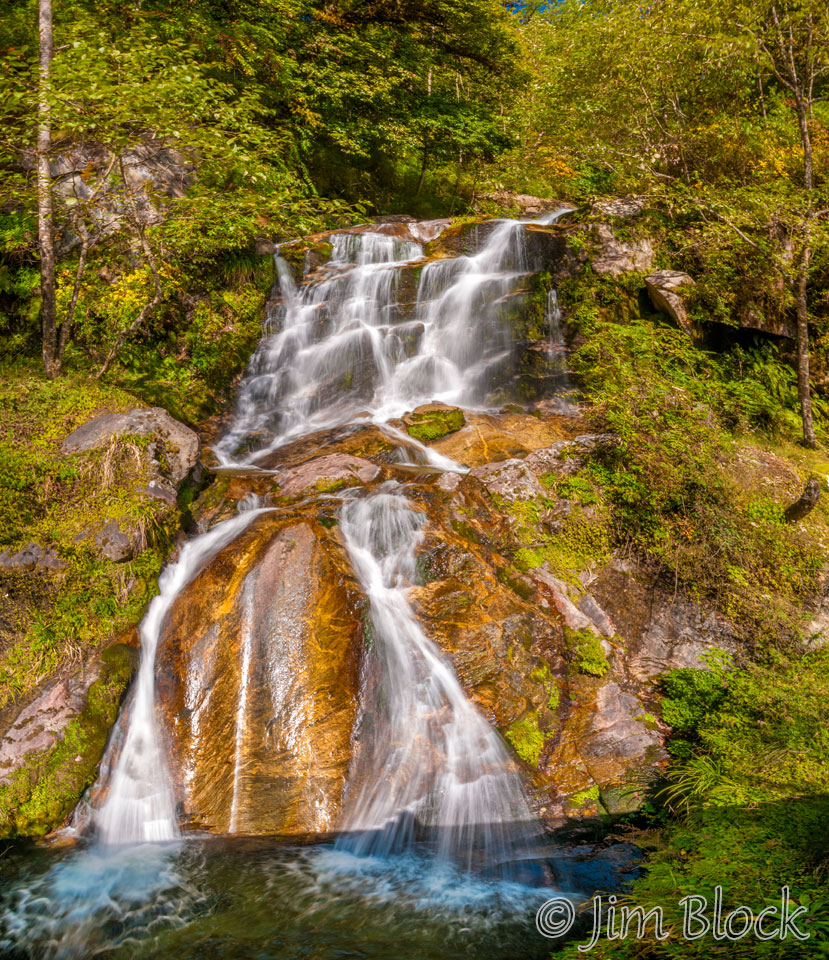
Lakey told us the chorten at Chendebji was modelled after Boudhanath in Kathmandu, Nepal. It was a nice looking stupa but it paled in comparison to Boudhanath.
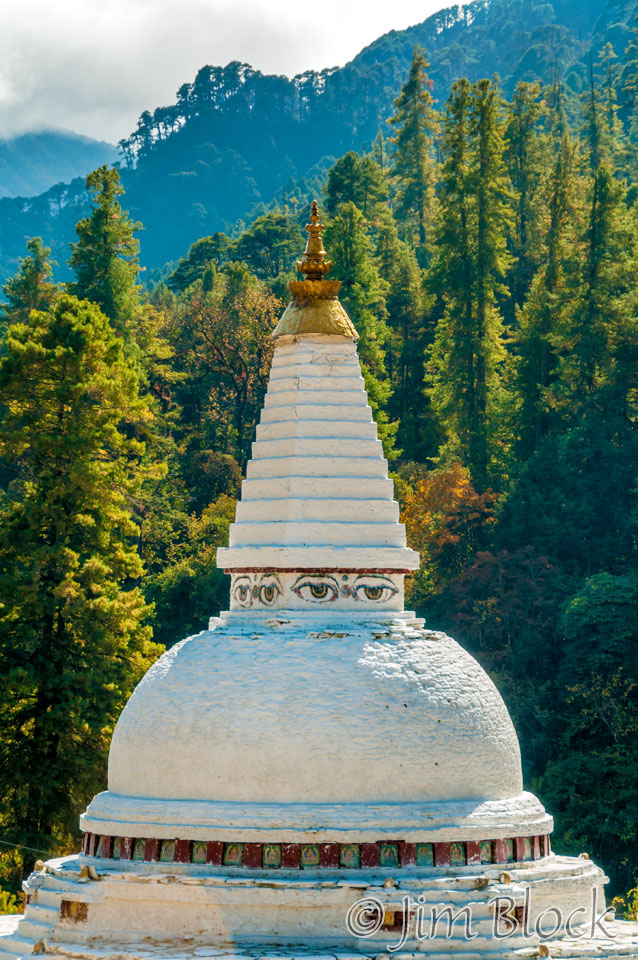
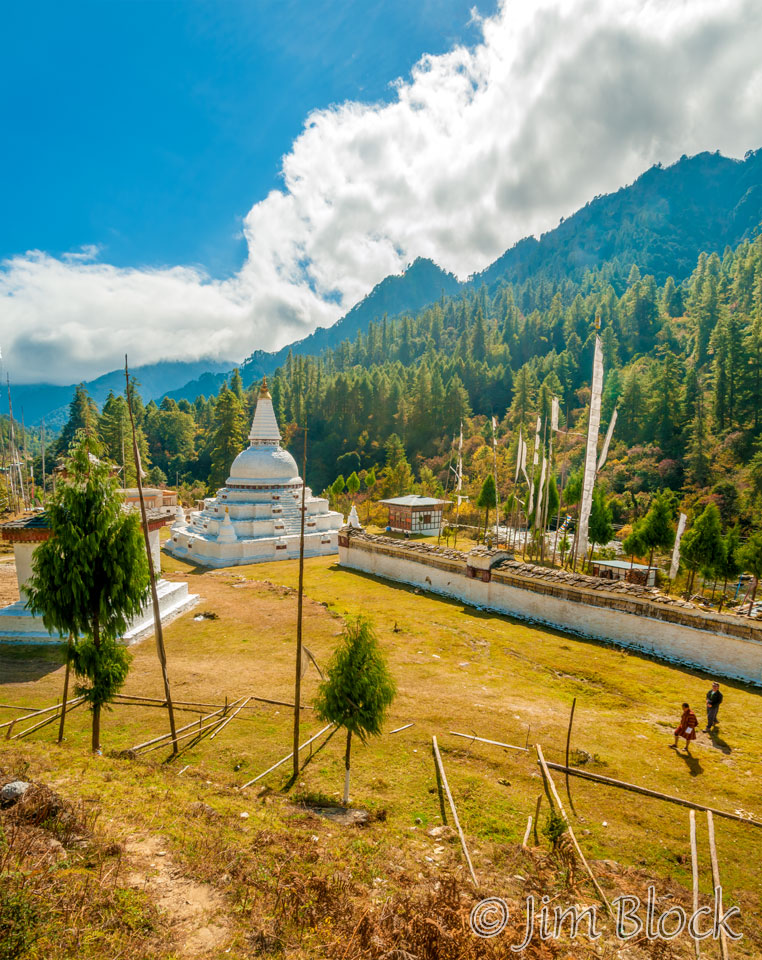
Before we turned south onto the very rough road into the Phobjikha Valley, we stopped briefly near Pele La (pass). That is Mount Jomolhari in the distance in the left part of the photo. In a week we would be seeing it up close and personal.
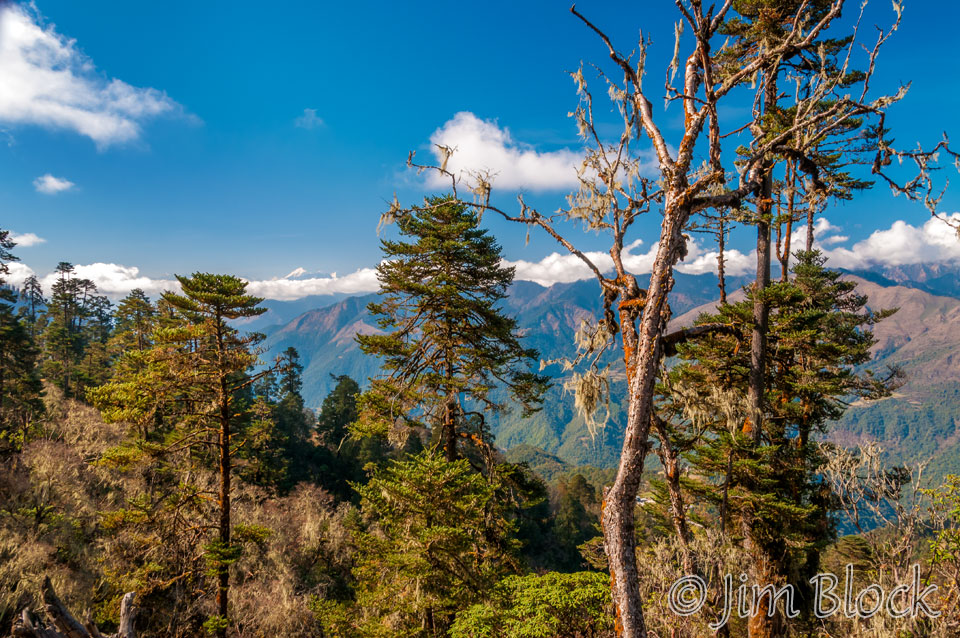
Here are some of the other photos I took during our afternoon and morning in Trongsa.

